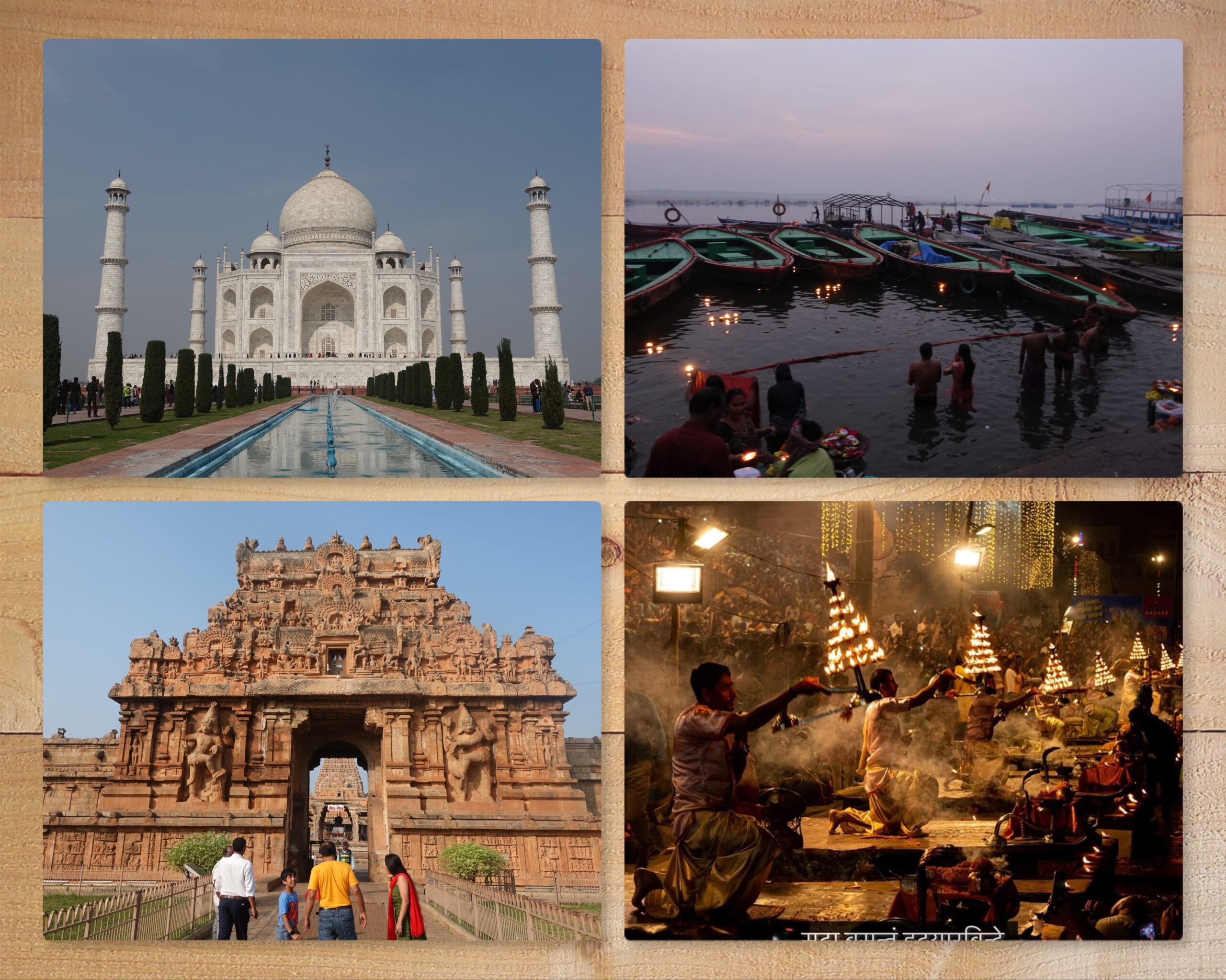Table of Contents
- 1 List of recommended reference books to learn about Indian history, religion, and culture - The more you know, the more interesting the Indian swamp.
- 2 Recommended reference books for learning Indian history
- 2.1 NHK Special: The Four Great Civilizations of Indus
- 2.2 Akinori Uesugi, Indus Civilization: Exploring the Dynamism of Civilized Society.
- 2.3 Yamazaki, Genichi, Civilization and Society in Ancient India .
- 2.4 Tsuyoshi Fujii, Caste in History: Self-Portrait in Modern India.
- 2.5 Tatsuo Morimoto, A History of Indian Independence.
- 2.6 W. Dalrymple, Empire of Plunder: The Rise and Fall of the East India Company.
- 2.7 Eijiro Ma, The Truth about Gandhi: What is Nonviolent Thought?
- 2.8 NHK Special: Paths of Civilization Silk Road by Sea and Land
- 3 Recommended reference books to learn about Indian religion and culture
- 3.1 Yoshiemi Hotta, What I Thought in India.
- 3.2 Hiroshi Yamashita, The Ideas of Ancient India: Nature, Civilization, and Religion
- 3.3 Shunji Hosaka, A History of the Rise and Fall of Indian Religions.
- 3.4 Tatsuo Morimoto, Hinduism: Sacred and Secular in India
- 3.5 Yuto Kawamura, Words and Spell Power: Unraveling Vedic Mythology.
- 3.6 Noboru Karashima and Yasuaki Nara, The World History of Life 5: The Face of India.
- 3.7 Martin J. Dougherty, Encyclopedia of Indian Mythological Tales.
- 3.8 Masaaki Hattori, The Mystical Thought of Ancient India: The World of the Early Upanishads.
- 3.9 Musashi Tachikawa, "Hindu Pilgrimage.
- 3.10 Naoshiro Tsuji, The Dawn of Indian Civilization: The Vedas and the Upanishads
- 3.11 Naoshiro Tsuji's translation of "Hymns to the Rig Veda
- 3.12 Mizuho Okita, Introduction to the Mahabharata: An Introduction to Indian Mythology.
- 3.13 Katsuhiko Uemura, The World of the Bhagavad Gita: Hindu Salvation.
- 3.14 The Mahabharata, a Tale of Indian Mythology
- 3.15 The Bhagavad Gita.
- 3.16 The Indian Mythological Tales of the Ramayana
- 3.17 Akira Hasegawa, An Introduction to Indian Mythology.
- 3.18 Nobuyuki Watase, "Code of Manu: The Prototype of the Hindu World."
- 3.19 Manu Code."
- 3.20 Kautilya, "Pragmatics.
- 3.21 The Kama Sutra."
- 3.22 Kenji Watanabe, Jainism: Non-Possession, Non-Violence, Non-Killing: Its Doctrine and Real Life.
- 3.23 Recommended books for those who want to know more about Indian Buddhism
- 4 Recommended reference books to learn about modern India
- 4.1 Aya Ikegame, "India's Cruelest Tales: The World's Toughest People.
- 4.2 Kinya Fujimoto, "The True Nature of India: The Danger Lurking in Its Favorable Development" (in Japanese)
- 4.3 Ryohei Kasai, "Modi Changes India.
- 4.4 Seiyoshi Noboru, How to Deal with Indians: Common Sense and Business Secrets of India.
- 4.5 James Crabtree, "Billionaire India.
- 4.6 Shinya Suzuki, "Caste and Tentacledons in Contemporary India.
- 4.7 Daisuke Sato, "1.3 Billion Toilets.
- 5 Conclusion
List of recommended reference books to learn about Indian history, religion, and culture - The more you know, the more interesting the Indian swamp.
In this article I will present my recommendations for Indian reference books.
This blog is currentlyTravels to Buddhist Sacred Sites in India and Sri Lanka: What I Felt When I Was Called to India."I am also strongly influenced by the books I am going to introduce in this series of articles.
I used to be,"For those who want to know more about Indian Buddhism, here are some books I highly recommend - from introductory to specialized books."In this article, I would like to focus more on Indian religion, history, and culture.
The links to each of the articles provide more detailed introductions to the books, so if you are interested, please take a look at them as well. So, let's get started.
Recommended reference books for learning Indian history
NHK Special: The Four Great Civilizations of Indus
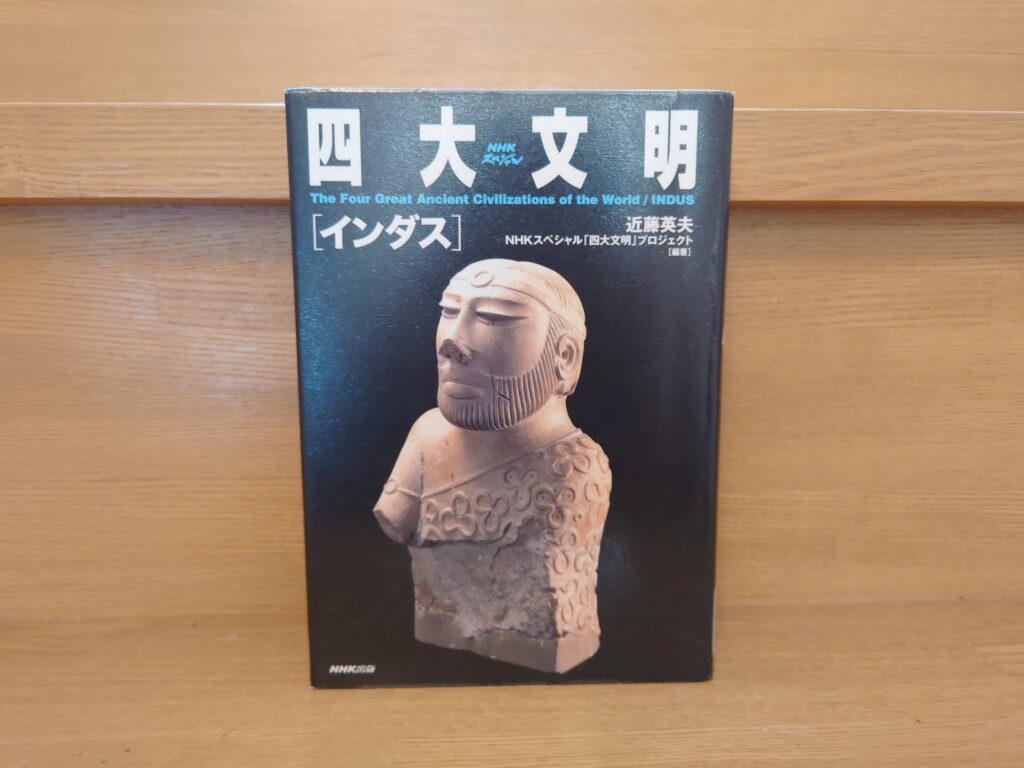
This book is based on an NHK Special report and is a recommended introduction to the Indus civilization.
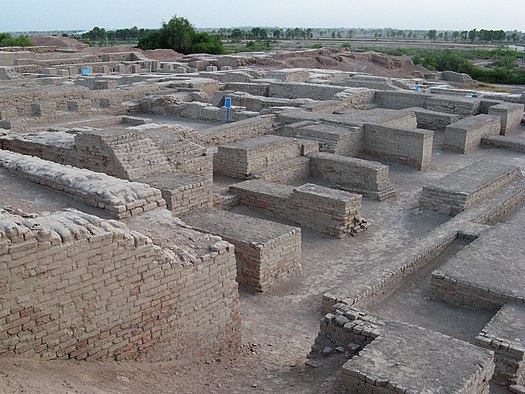
As shown in the product introduction above, the book introduces many valuable photographs and illustrations of the then newly discovered site of Dhoby Dhola and of the Indus civilization as a whole. It also provides an easy-to-understand explanation of the world of ancient India, which we are not usually exposed to. This book was the first book I read on the Indus Civilization, and it was a smooth read. It is a very high quality gem as an introductory book.
It is often said that our common sense does not apply at all in India, and I think it is interesting that this book gives us a good sense of that atmosphere.
Akinori UesugiThe Indus Civilization: Exploring the Dynamism of Civilized Society.
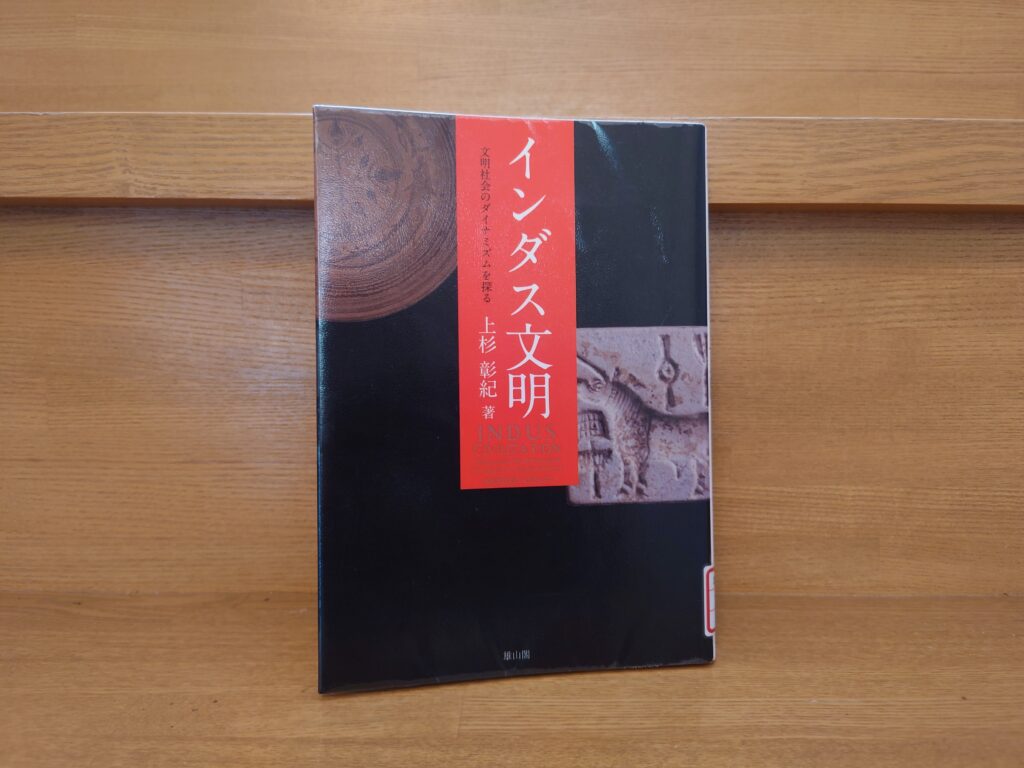
As the title of this book is "Indus Civilization: Exploring the Dynamism of Civilized Society," this book looks at the major historical movements of the Indus civilization from its birth to its decline. We tend to focus on the amazing prosperity and technology of ancient civilizations, but this book teaches us the importance of looking at the decline and transformation as well.
Buddhism also emerged in the context of the history of the Indus civilization and the Indian world that followed. The Indus civilization did not decline and disappear completely, but rather became integrated and integrated into the subsequent Indian world.
Buddhism is part of such a larger historical trend.
When we say "Buddhism was born in India," we tend to think of it as something new and independent.
In fact, however, this is not the case, and Buddhism was born in close association with the Indus civilization, or even more specifically, with the history of the world.
Until I learned about the Indus civilization in this way, I was hardly aware of the connection between Buddhism and the Indus civilization.
But after reading this book, I once again felt the grandeur and dynamism of human history. India is still interesting!
It is an interesting work that gives us an insight into the various forms of the mysterious Indus civilization.
Genichi YamazakiCivilization and Society in Ancient India .
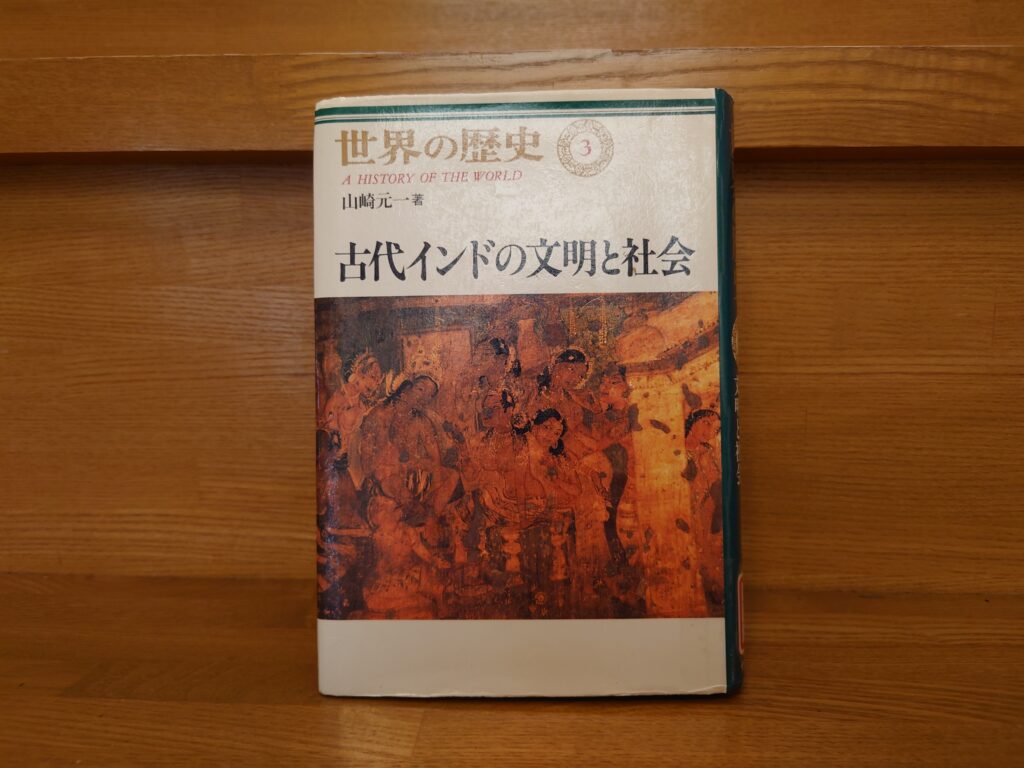
This book is a recommended guide to learn more about the history and culture of ancient India.
The book is very easy to read and understand. It is extremely easy to read and understand.
And I picked up this book because I wanted to know the historical background of the birth of Buddhism. To know why Buddhism was accepted by people, one must know not only the ideology but also the soil in which it was accepted. I wanted to know what kind of society people lived in and what kind of lifestyle they had at that time.
This book was a wonderful answer to my question.
Tsuyoshi FujiiCaste in History: Self-Portrait in Modern India.
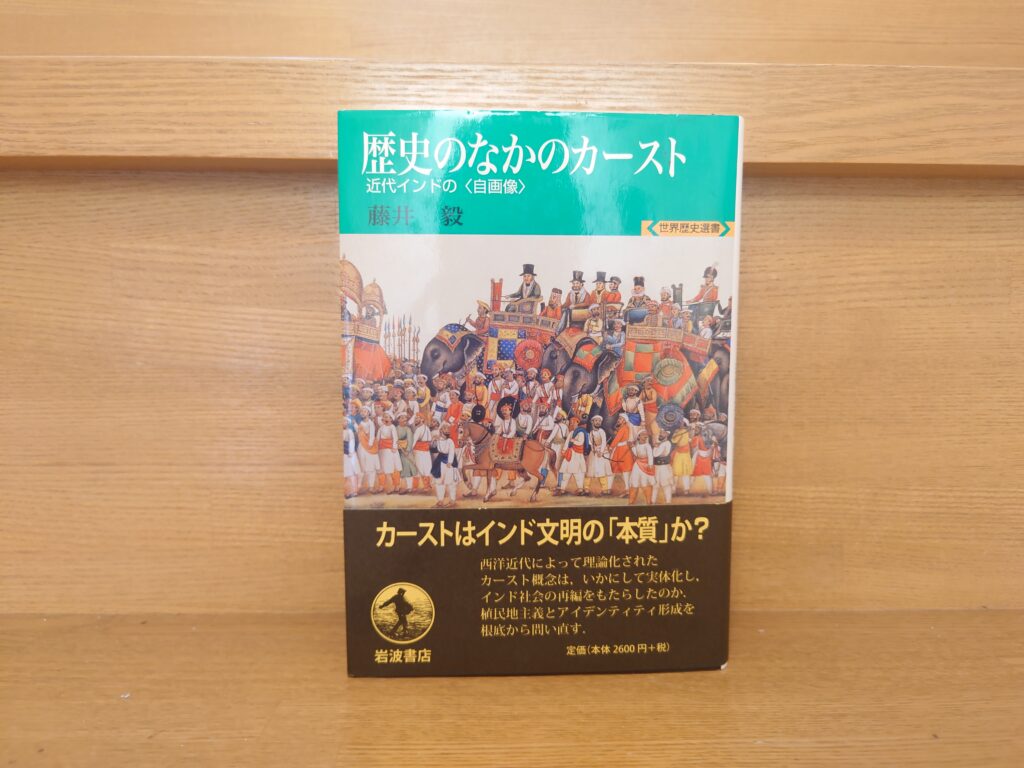
This work shows how the caste system in India was made more complex and fixed by British colonial policy.
I picked up this book by Aya Ikegame, which I have previously mentioned on this blog.India's Cruelest Tales: The World's Toughest Peoplewas the catalyst.
In this book, I learned about the tragic reality of caste discrimination that continues to this day. And it was this book, "Caste in History: Self-Portrait of Modern India," that was introduced in the book.
Caste discrimination in India has existed since ancient India. However, modern caste discrimination is not necessarily from ancient India.It is not something that has continued as it is.The following is a list of the most common problems with the
There was the influence of colonial rule in England, as well as India's own complex culture and ethnicity.
The caste system in India is anyway complex.
It is true that there was a caste system in ancient India. And as we have seen on this blog, it was Buddhism and Jainism that criticized the caste system.
However, it was the British colonial policy that transformed the indigenous Indian caste system and made it stronger. And to make matters more difficult, the book reveals that there were also efforts on the part of the Indians to use their own caste in order to survive British colonial rule.
This book is very valuable for a detailed look at the two-way action between the British and other Western nations and the local Indians, which has led to the current caste.
The author pointed out in this book that the caste system in India tends to be spoken of in simplistic terms. This book clarifies why such a simplified caste system is talked about in the historical context.
This book is a very gratifying work to learn about the complexity of India. I highly recommend this book.
Tatsuo MorimotoA History of Indian Independence.
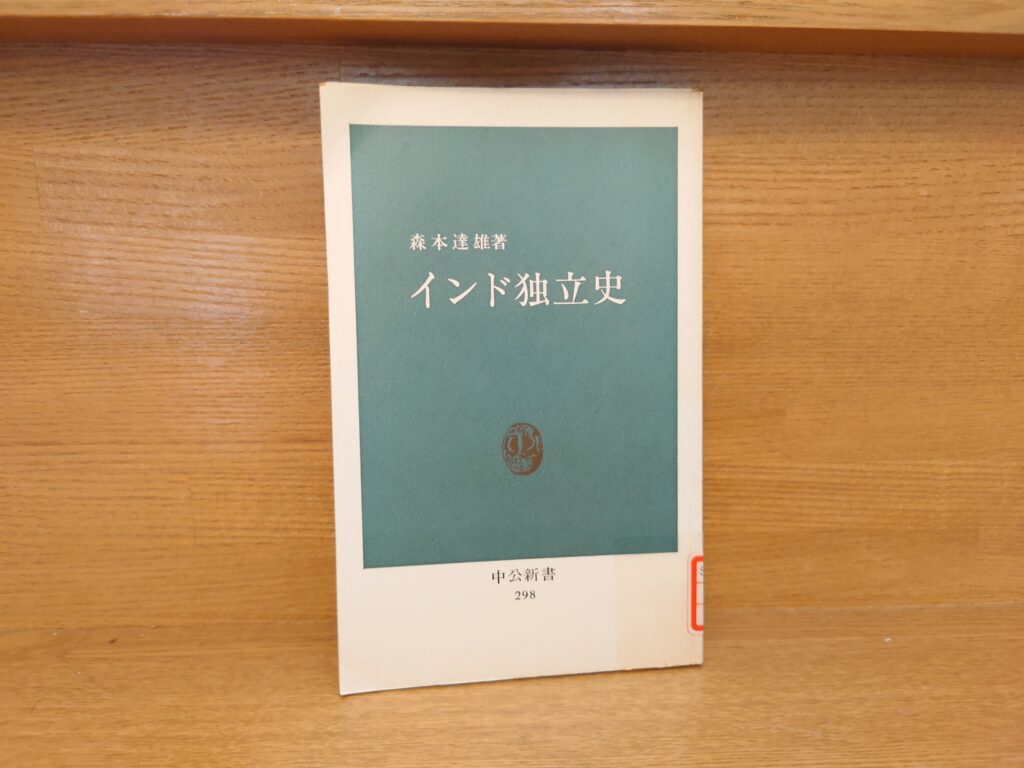
This book is so heavy... The history of the Indian tribulations described in this book is unimaginable.
When you think of India's independence from the British colonies, you probably think of Mahatma Gandhi.

Gandhi, the leader of Indian independence. We know Gandhi's famous resistance movements at the word level, such as non-violence, non-cooperation, and the Salt March. We also know that he was instrumental in India's eventual independence from Great Britain.
But what was going on in the background? In this book, you will witness the unimaginable complexity of the situation.
W. DalrympleEmpire of Plunder: The Rise and Fall of the East India Company.
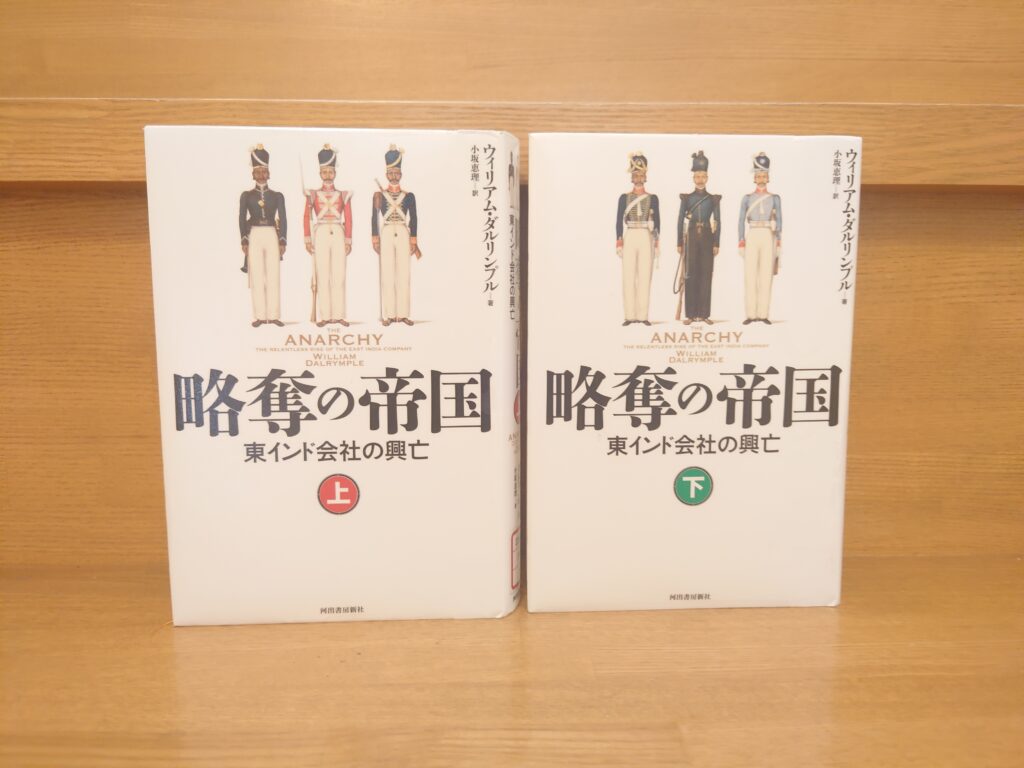
This book is a work that takes a closer look at the process by which colossal India was ruled by the British East India Company.
Let me say at the outset that this book is so shocking. I was even horrified when I read it. How did the Mughal Empire, which boasted of overwhelming prosperity, so easily succumb to the British trading company? What is discussed in this book is not completely irrelevant to those of us living in modern Japan. This book is truly a warning to us modern people.
I was truly frightened when I read this book. Even countries that once boasted of their prosperity are quickly crumbling. Japan may have been prosperous in the past, but now it is in a complete decline. And now the current turmoil.
As a modern warning book, this book is very significant.
Of course, I highly recommend this book to anyone interested in Indian history or British history. I also found this book to be very stimulating and connected to what I have learned so far. I was astonished that the American Revolutionary War and even Napoleon could be connected to this event.
It is a great book that also lets us know that the world is connected. I highly recommend this book.
Jiro MaenagaThe Truth About Gandhi: What is Nonviolent Thought?

Everyone knows Mahatma Gandhi as a great man who played a major role in India's independence.
This work, "The Truth About Gandhi: What is Nonviolent Thought?" is a recommended reference book that provides an easy-to-understand look at Gandhi's ideas, personality, and impact on society.
We are all familiar with Gandhi's famous phrase "nonviolence. However, what this "nonviolence" really means is not well known, or even misunderstood. This book raises such issues.
Chapters 5 and 6, in which Gandhi's religious views and family issues are discussed, are particularly shocking. I too was like, "What? That's right!" I was surprised.
However, this book is not mere gossip. Gandhi's ideas and personality are revealed through a variety of sources.
NHK Special: Paths of Civilization Silk Road by Sea and Land
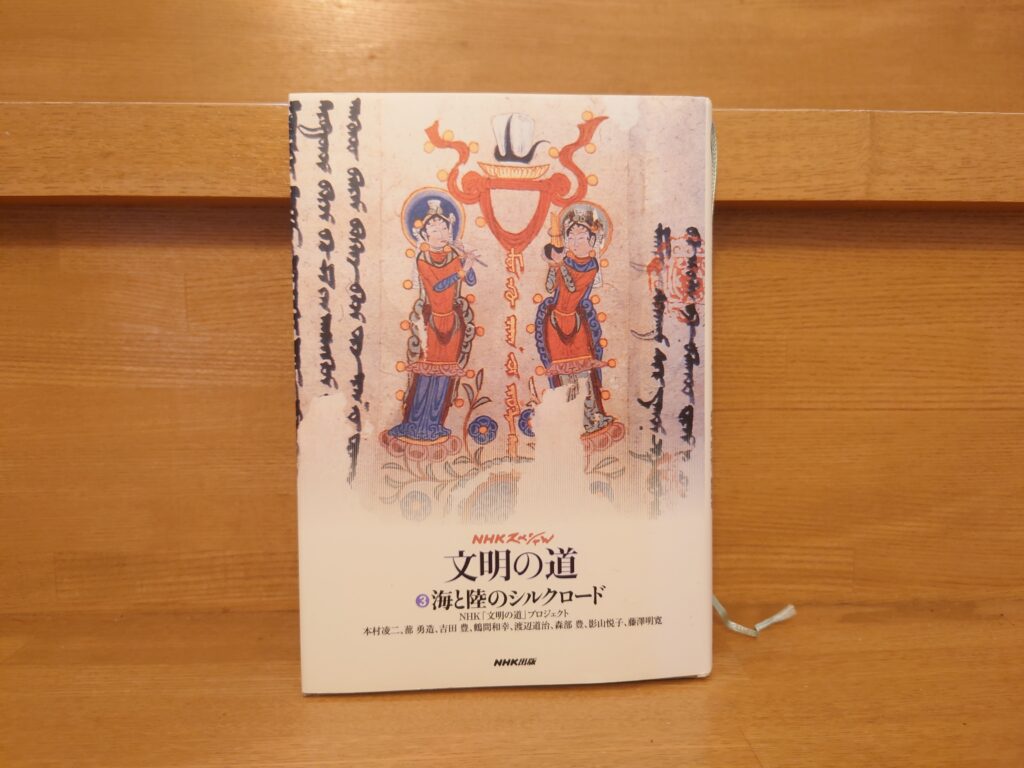
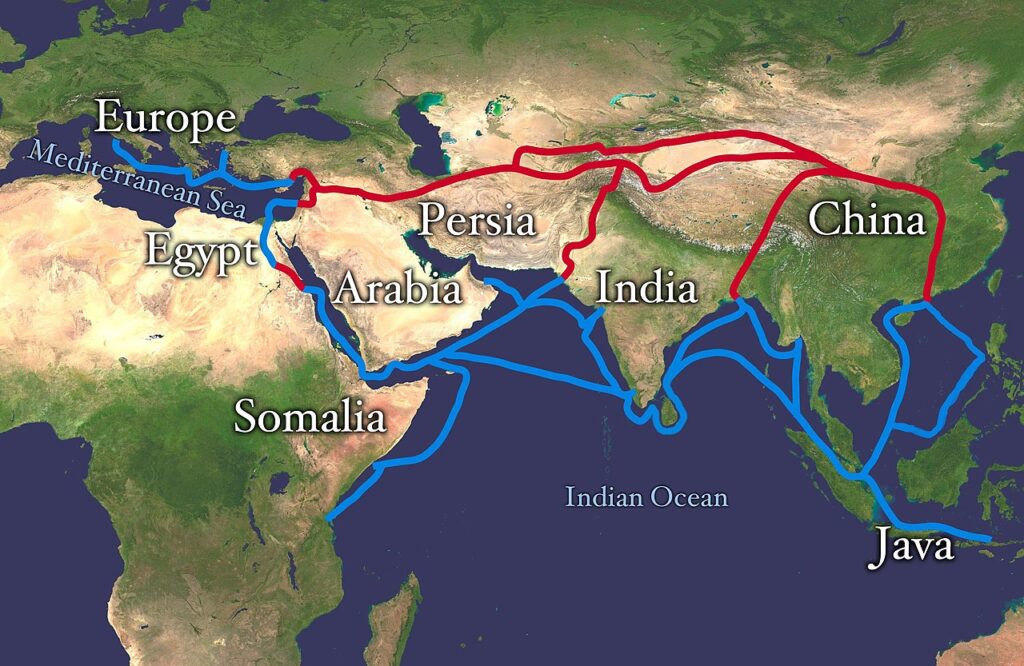
This book is one of the best for learning about the Silk Road that connected ancient India with the Roman Empire. It is richly illustrated and photographed for easy visualization, and the explanations are carefully told in a way that even beginners can easily understand.
As you can see in the image above, many people may be able to imagine the Silk Road by land, but the Silk Road by sea may not conjure up much of an image. I myself had an image of camel traders when I thought of the Silk Road, so the Silk Road by sea, where ships come and go, was very new to me.
Moreover, the fact that this mass transportation by ship was a major means of connecting ancient India and the Roman Empire was extremely romantic.
That being said, I have spent the last year reading various books about the Roman Empire. You can read more about them here.Rome: History, Culture, Religion, and Art! A roundup of great books that will make Rome even more interesting!"I was completely fascinated by the history of the Roman Empire. I was totally fascinated by the history of the Roman Empire. I can't get enough of it.
Ancient India and the Roman Empire are both worlds that I love, full of romance. This book, which connects the two, was one of my most exciting reads.
Recommended reference books to learn about Indian religion and culture
Zen-era Japanese women's hairstyle comprised of a long braid tied up in a loop with a ribbon (ca. 1885)'What I Thought in India'
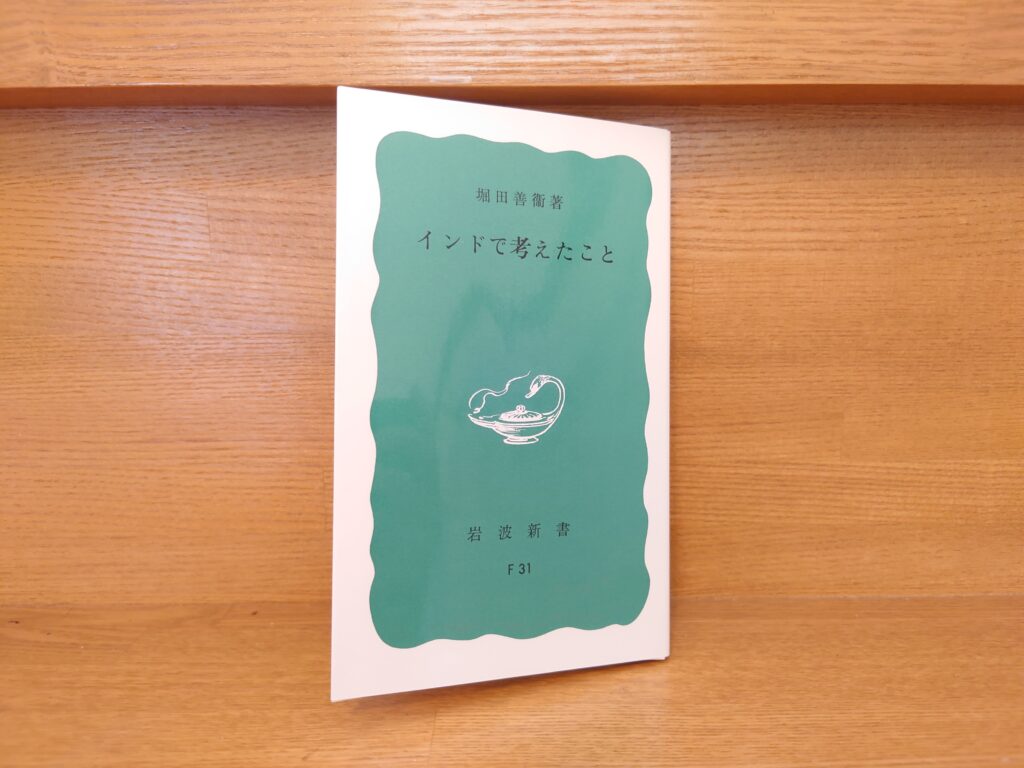
The story in this book takes place in India from 1956 to early 1957, nearly 70 years ago. This was a time of rapid economic development in postwar Japan, but also a time of social and ideological turmoil, including security issues.
At that time, it was almost impossible for the average person in Japan to travel abroad. In such a situation, India was especially attractive to Japanese people. This book may be said to be the one that strongly instilled a sense of curiosity and longing for India in the Japanese people.
About 10 years after the publication of this book, Yukio Mishima also visited India and described his experiences in his last major work, "The Sea of Fertility. India, after all, is a place that never ceases to inspire writers.
And the book has not faded at all nearly 70 years after its publication. It is extremely interesting. I read it many times before my trip to India.
Anyway, this travelogue is easy to read!
And not only are there deep insights into the depths of the human psyche, but there is also a sprinkling of humor that will make you chuckle. This is travel writing at its finest.
And the Indians in the book."Scary face."...
This is the one thing in the book that left a strong impression on me.
In fact, I will see its face during my visit to India in August 2023.
This book, "What I Thought in India" has been a strong influence for my visit to India. It is a wonderful travelogue. It has a deep human insight that does not end with a simple "Here's what I saw there!" but it is a deep insight into the people of India. It is extremely interesting.
This is a masterpiece travelogue of India that I highly recommend.
This book will help you too.Go to India.You may be lured by the voice that says
Hiroshi YamashitaThe Ideas of Ancient India: Nature, Civilization, and Religion.

In this book, you will learn that Indian thought has been greatly influenced by its unique climate and landscapes. It is very stimulating to see from the angle of nature and climate why an infinite cosmic philosophy was born in India, and why Indians believe in a polytheistic religion.
"(1) Why I don't want to go to India, why I still have to go to India, that is the question."As I mentioned in my article on the book, it was this book that inspired me to go to India during the rainy season in August.
Shunji HosakaA History of the Rise and Fall of Indian Religions.

This book is a much appreciated reference for learning about Indian religions.
This book is unique in that it does not look at each of India's many religions separately, but focuses on their interrelationships.
The relationship between Brahmanism, Buddhism, and Jainism in ancient India. What was the background from which Hinduism and Islam grew in power over time? Why did Buddhism decline, and why has Jainism, which is said to be its sister religion, been able to survive today? This book is very valuable because it allows us to look at these questions from the historical background and the interrelationships among religions. Religion is not only religion. History, culture, politics, and economics are all involved. This book is a very stimulating work that allows us to feel the dynamism of such history.
Tatsuo Morimoto, Hinduism: Sacred and Secular in India
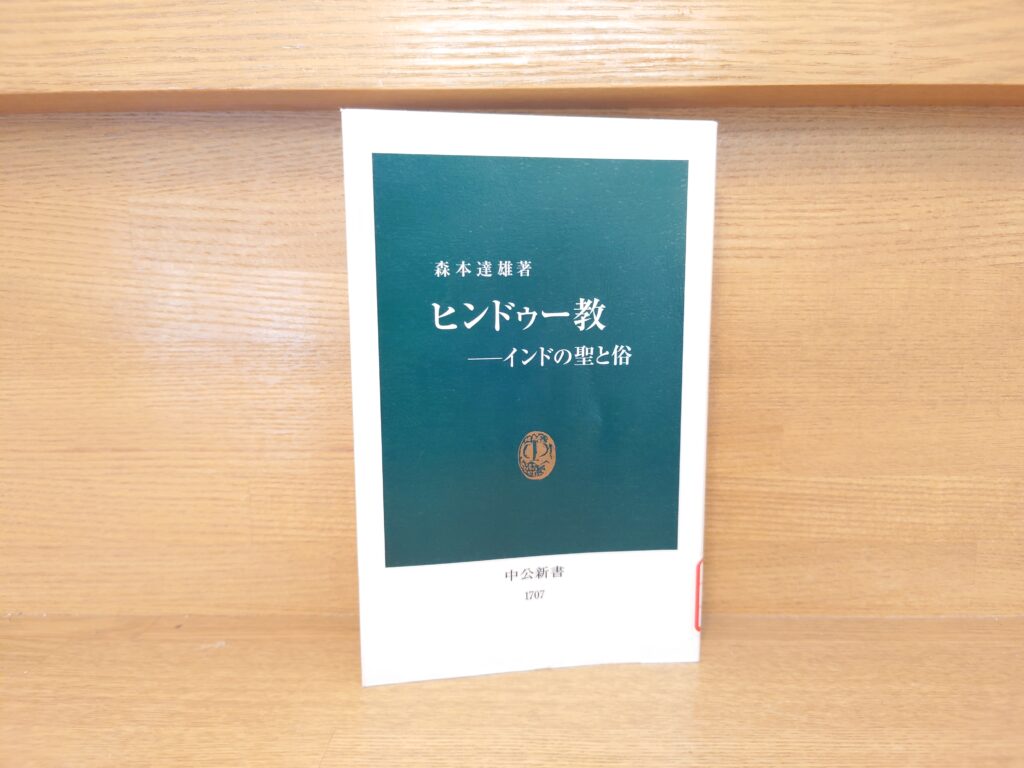
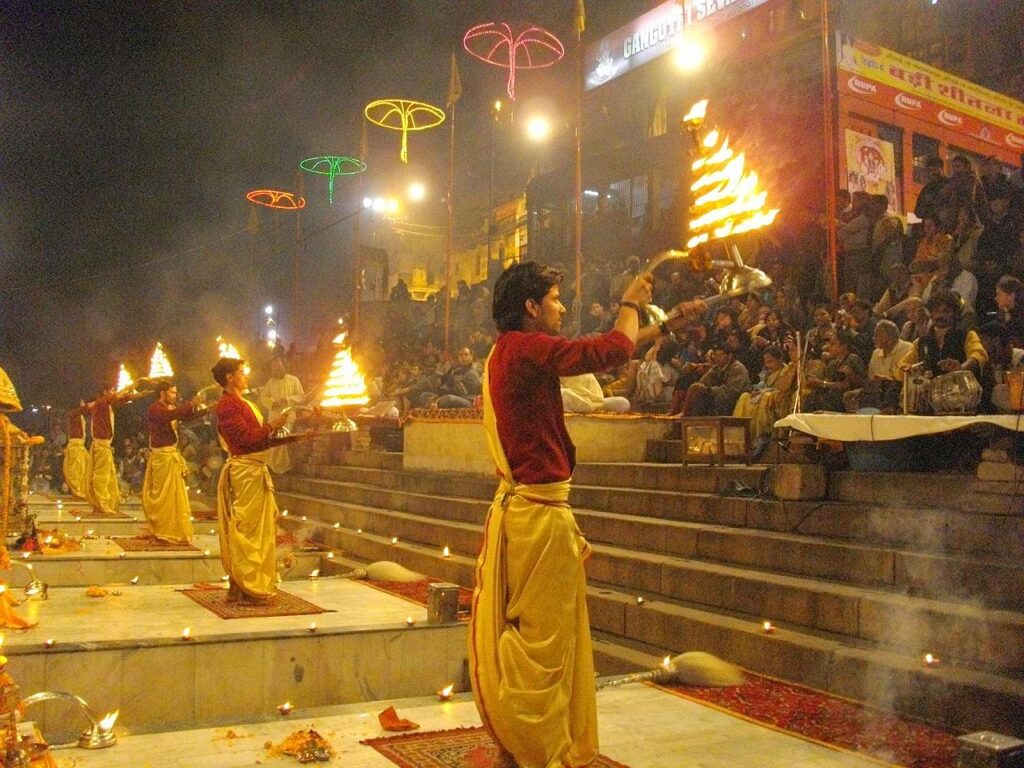
When I think of India and Hinduism, I tend to associate it with worship rituals like the one pictured above, but in this book, you can learn not only about the origins and philosophy of Hinduism, but also about the beliefs of ordinary believers on a daily level.
India is a country of mystery. This book is a fun way to learn about India, a country that even seems otherworldly, even though it is part of the same Asian region. The author's narrative is very easy to understand, and you will discover the fascinating world of India, which is complex and mysterious. It is interesting to know "why India is so unique" along with the historical background.
From our point of view, India appears to be a complex and mysterious magical land. In the background, there is a unique religious situation. This was very interesting.
You will also learn many other interesting religious situations in India in this book. And they are not limited to Indian religions, but also make you think about what religion is all about in the first place.
This was an interesting book. I feel myself getting more and more addicted to the Indian swamp.
Yuto KawamuraThe Word and the Spell: Unraveling Vedic Mythology."
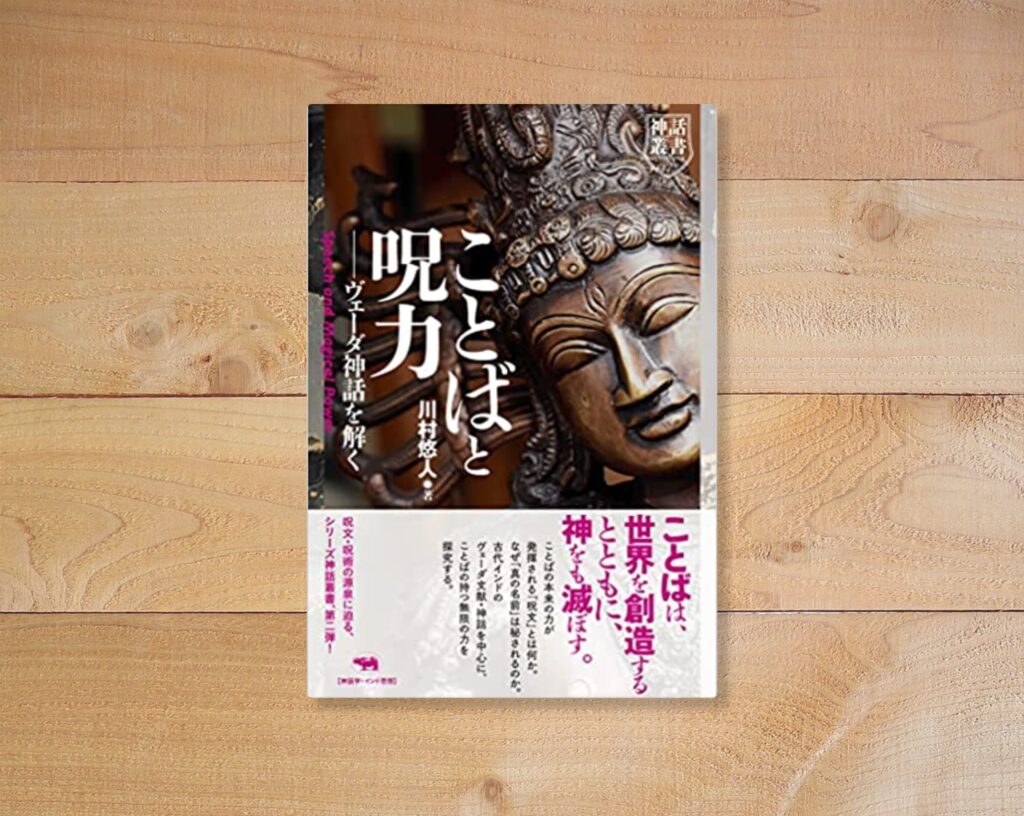
This book is a work that considers the power of "words" based on the mythology of ancient India. The Vedas of ancient India may sound difficult, and you may be tempted to take a step back, but don't worry. The author has made every effort to make the book easy and enjoyable to read, even for those who know nothing about India.
Words represent a person's self. Of course, as they say, "words, words, words," sometimes words themselves cannot be trusted. However, the words we use in our daily lives express who we are. I believe that words are something that comes from within a person.
I think this book is a wonderful opportunity to rethink language. It is also an enjoyable way to learn about the history and culture of ancient India, which we don't usually come into contact with.
Noboru Karashima, Yasuaki NaraA World History of Life 5: Faces of India."
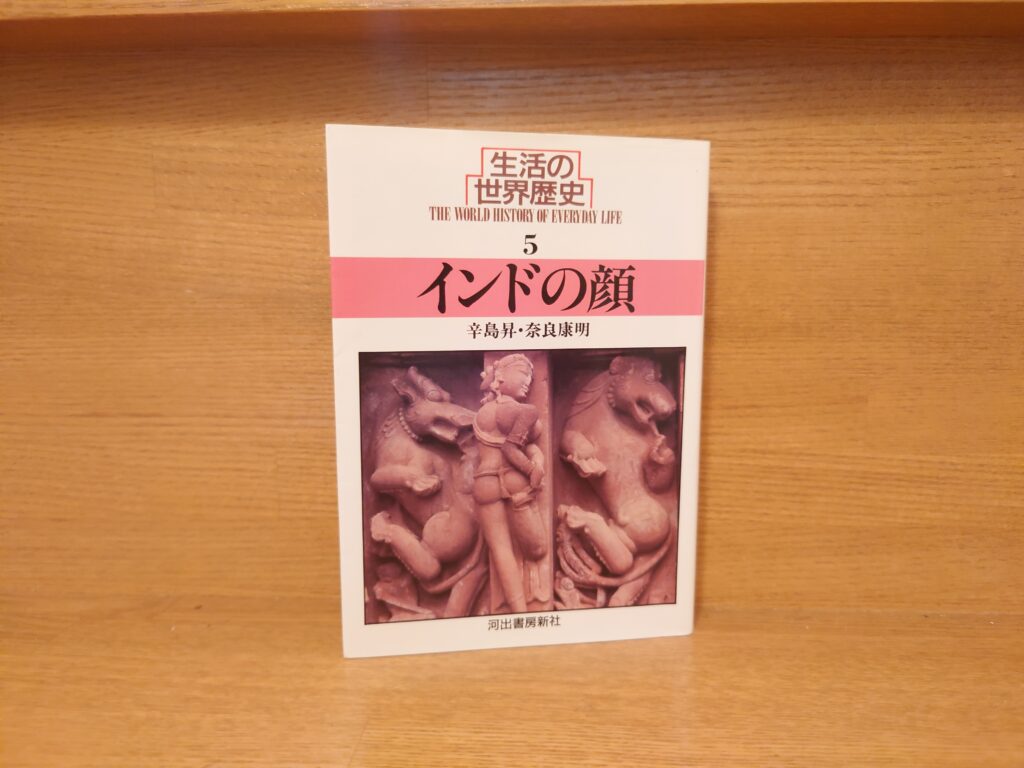
In this book you will learn about the culture and spirituality of the Indian level of life. As the author states, in real life there are "real feelings and built-up feelings. If you ignore this and focus only on one or the other, you will end up with something completely different.
In addition to these religious aspects, the book covers a wide range of aspects of "Indian life," including caste, art, food (including curry), politics, language, urban and rural areas, sexuality, and more. I found this book very interesting in terms of the birth of Buddhism and its absorption into the Hindu world. I highly recommend this book. I highly recommend you to pick up a copy of this book.
Martin J. DoughertyEncyclopedia of Indian Mythological Tales.
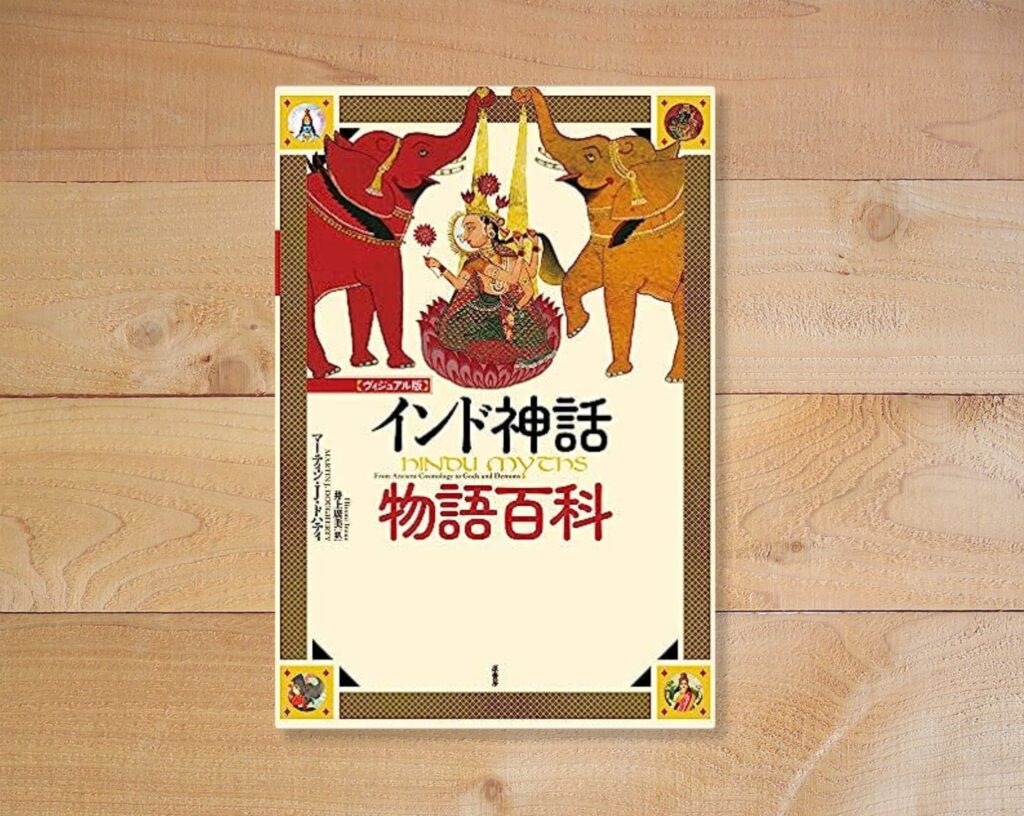
Doherty does not merely tell us the story, but also the historical background and the depth of the culture.
In this work, "Encyclopedia of Indian Mythology," Doherty states, "To understand any religion, it is essential to know the society and culture behind it, and the history of its formation (p. 13)," and he is very grateful that we can also learn the historical background of the formation of Hinduism. The book is a very useful book to learn about the historical background of the formation of Hinduism.
Man cannot know all the truths of the world. Myth itself does not provide answers either. But,Self-awareness exists there."The following is a list of the most common problems with the
I was struck by this commentary. I have been studying the subject of "Shinran and Dostoevsky" for about four years now, and the idea that there is no such thing as absolute truth rarely comes up in a Christian worldview. The existence of God, the Absolute and Creator, is there as self-evident. In India, however, this was not the case. It is interesting to feel these differences between the West and the East.
And as you read this book, you will also learn about the Hindu view of life and death and the afterlife. When you think about these things in the context of the historical background of the time, you will realize that Buddhism is exactly what it was.The Indian Context."I strongly felt that I was born from
I realized once again that the very idea of Buddhism and the terms and concepts used in it came from the world of Hinduism. There are things that can be seen by going back to Buddhism and learning about Indian history and culture. This reading convinced me of that. This is interesting. I think it is a wonderful work that gives us a new perspective on Buddhism.
Masaaki HattoriThe Mystical Thought of Ancient India: The World of the Early Upanishads.
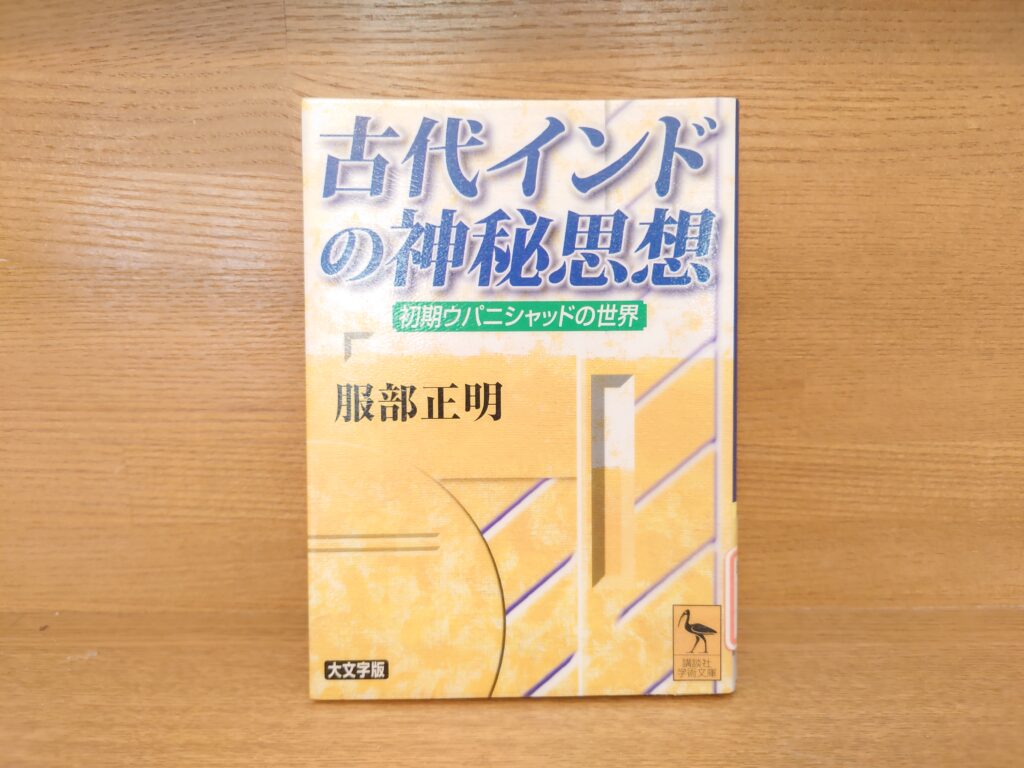
This book is a treatise on the Upanishadic philosophy, which is the deepest branch of ancient Indian thought.
And as I mentioned in the title of this article, the connection between ancient Indian thought and Schopenhauer is also discussed early in the book.

We have looked at Schopenhauer on this blog in the past, but it was very interesting to learn more about his connection to ancient India and the impact it had on European society.
Musashi TachikawaThe Hindu Pilgrimage.
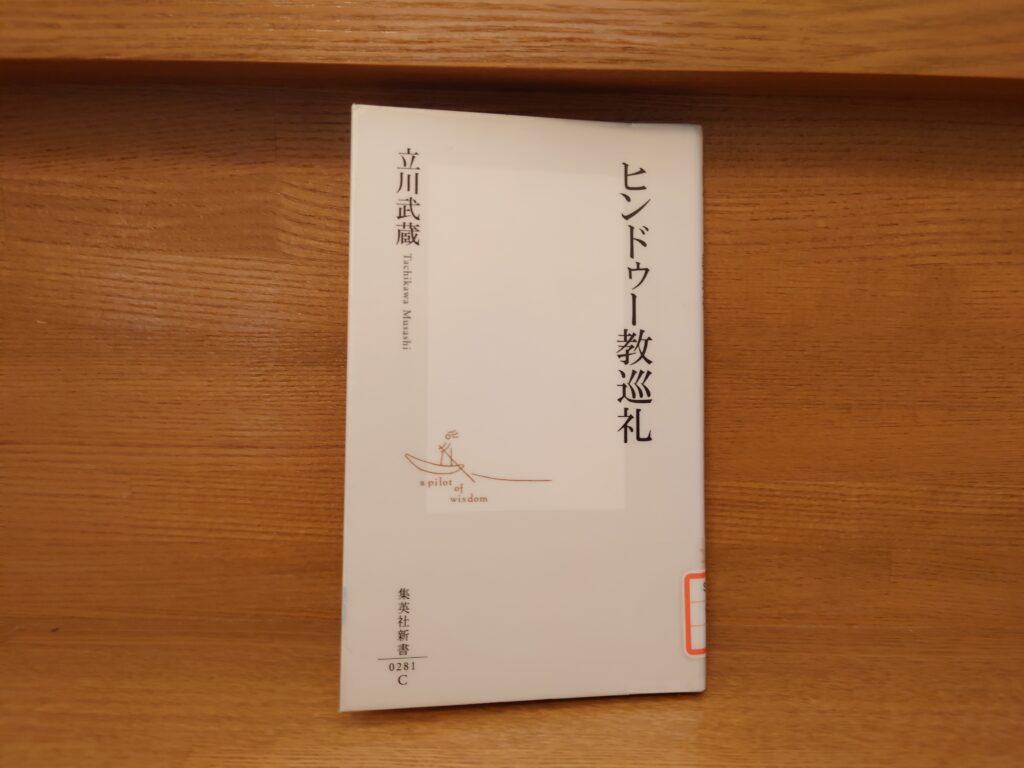
This book is a work that makes you feel like you are traveling with the author through the sacred places of Hinduism.
In this book, not only India but also places such as Nepal and Bali will be introduced. Hinduism is often associated with India, but in fact Hinduism was also practiced in neighboring countries. The chapter in Kathmandu, the capital of Nepal, was particularly eye-opening for me. The author opens our eyes to the world as he sees it, and what happens when modern capital is rapidly introduced into a traditional society.
The ancient and ever-living form of religion and people's lives. In this book, we see not abstract philosophical concepts, but the very lives of flesh and blood people. What is the relationship between the local people and religion? What are the differences from those of us living in Japan? These questions will make you think.
Naoshiro TsujiThe Dawn of Indian Civilization: The Vedas and the Upanishads.
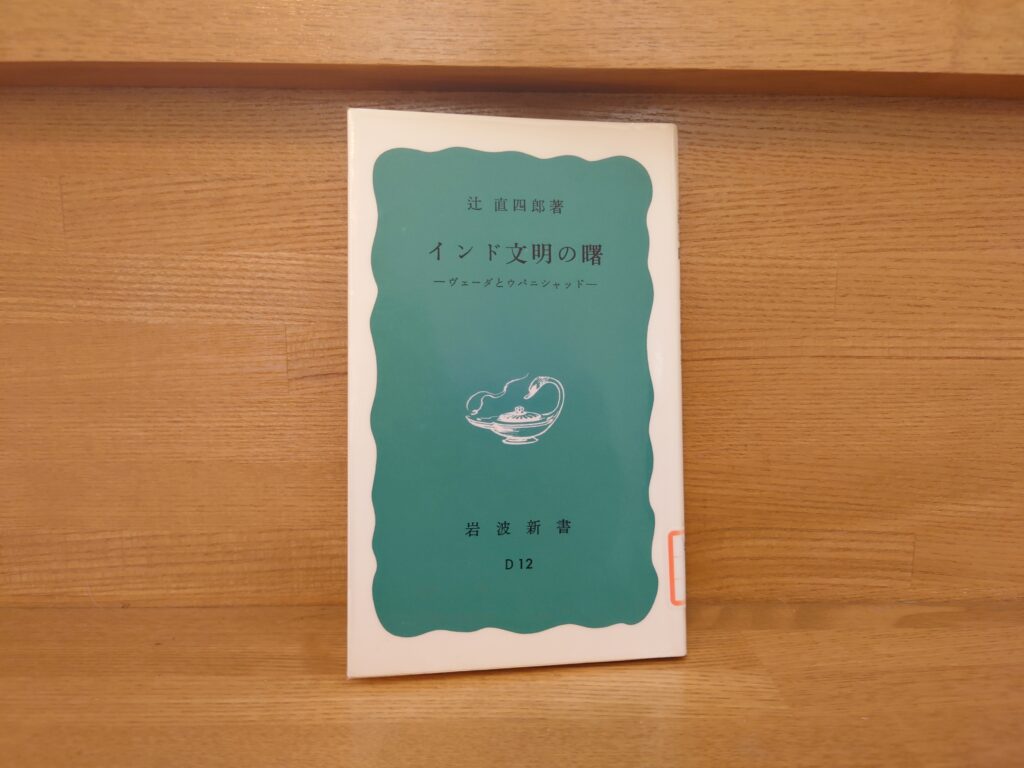
This book is intended to introduce the non-specialist to an overview of the Vedas. Therefore, this is not a study of the Vedas, but an introduction to the Vedas as common sense."
The Vedas and the Upanishads" may sound incredibly difficult, but as described here, this book is a primer written for non-specialists to understand.
This book provides an insight into what was believed in ancient Indian religion and how it was believed.
In particular, the Rig Veda, India's oldest document, contains many Brahmanic deities that became the source of today's Hinduism. This book was also a very gratifying work for me in feeling the difference between the Indian religion before it became Hinduism.
Translated by Naoshiro TsujiThe Rig Veda Hymn
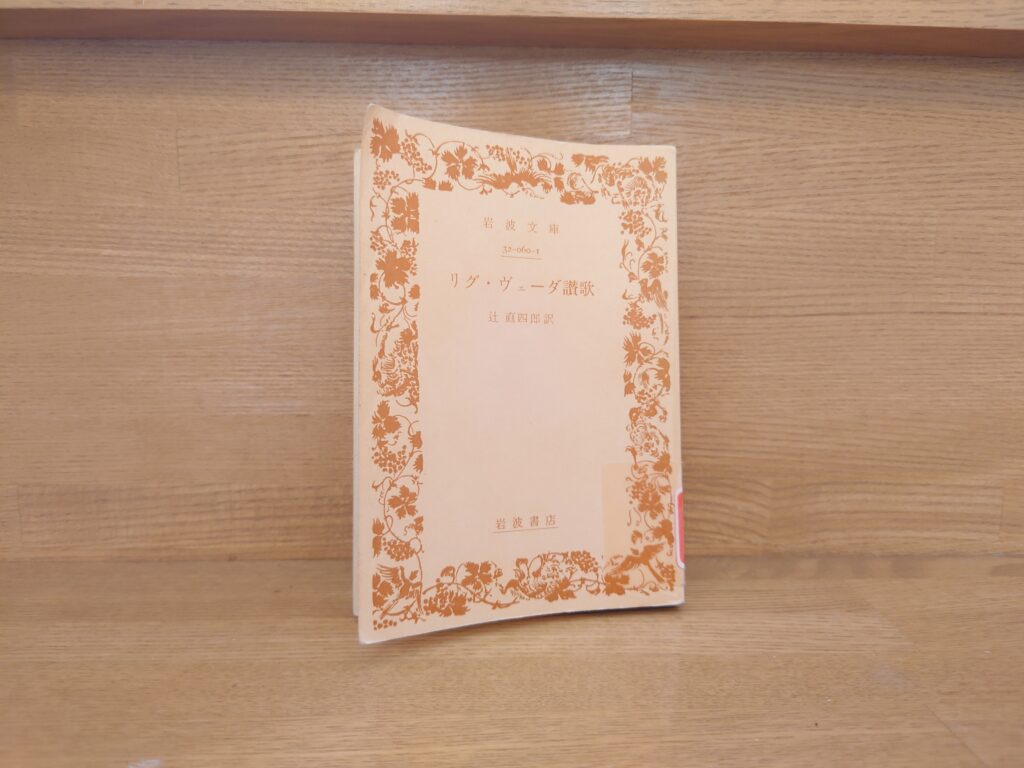
The book will be a work of excerpts from key passages of the Rig Veda, the fundamental scriptures of ancient India.
Above is a recommended reference for this scripture, by Naoshiro Tsuji.The Dawn of Indian Civilization: The Vedas and the Upanishads.and now it is time to introduce the main body of the project.
As the title "Rig Veda Hymn" suggests, the scripture repeats the praise of the gods anyway.
And as mentioned in the commentary above, there is just so much variation in its deities. It is also very interesting that the ranking and order of the gods there is ambiguous. A truly polytheistic world is unfolding there.
One of the most interesting points was that Vishnu and Shiva, who later became the main deities in Hinduism, are overshadowed in this "Rig Veda Hymn". It was very interesting to note that Shiva, whose predecessor was named Rudra, was not that popular in ancient India.
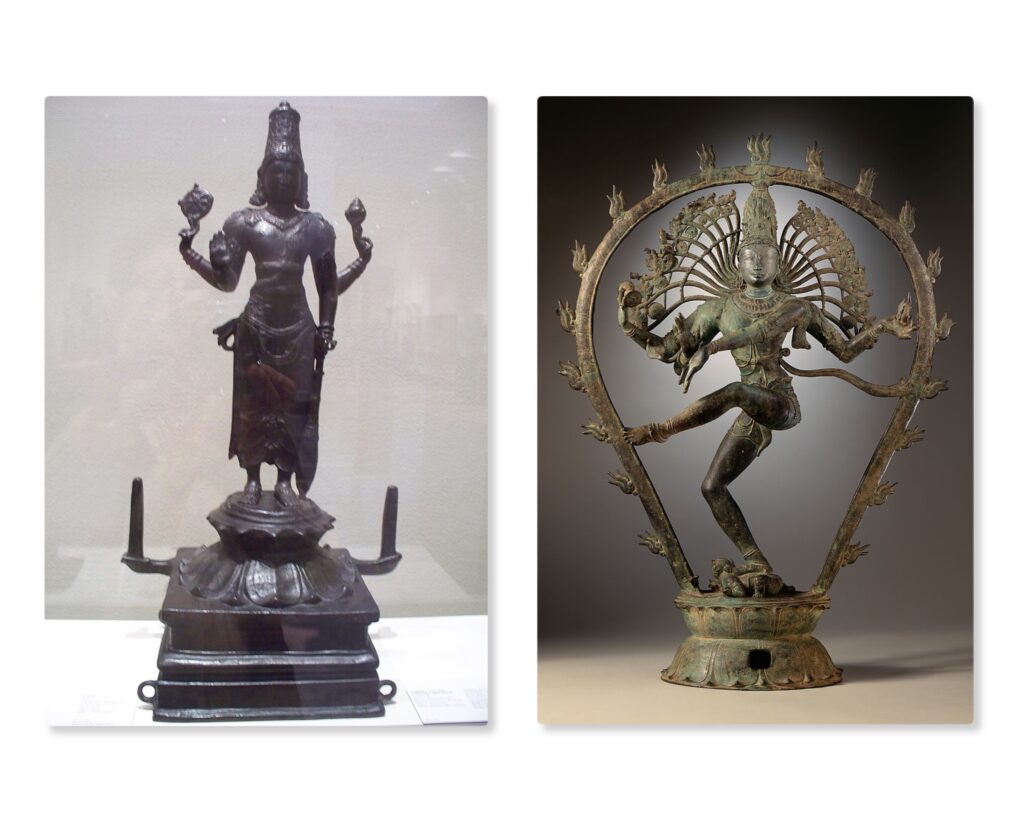
Vishnu and Shiva, who were shadowy in this Veda, eventually became immensely popular in Indian religion. This change is likely to be a very important point in understanding Indian religion.
Mizuho OkitaAn Introduction to the Mahabharata: An Introduction to Indian Mythology."
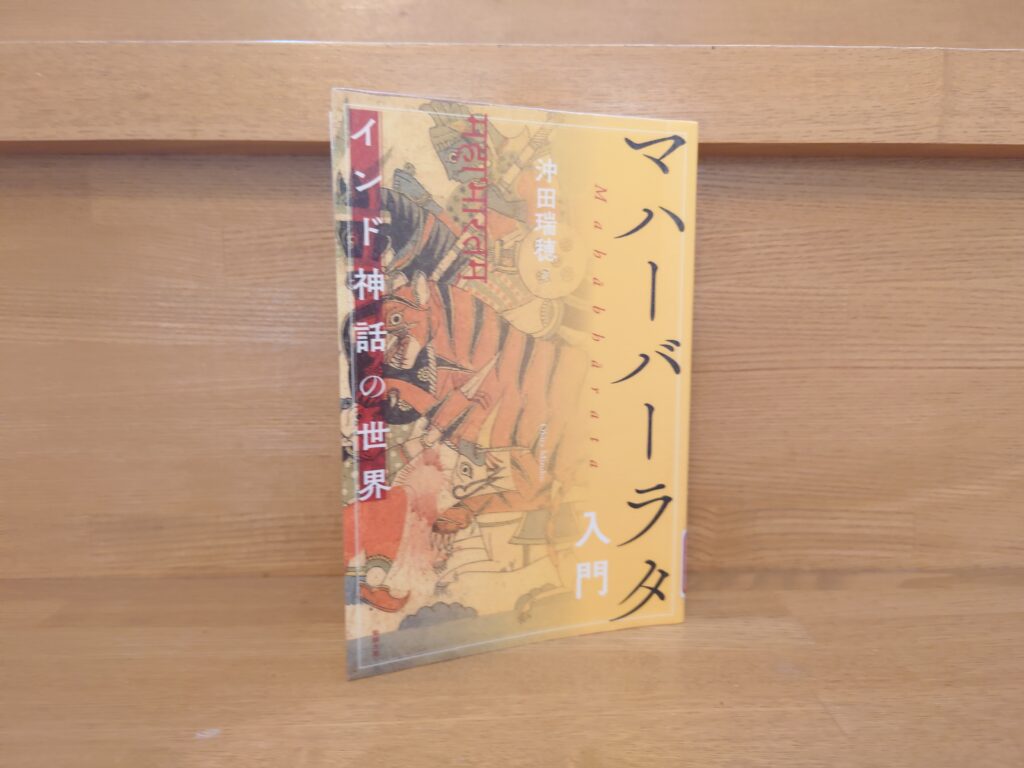
Let's take a quick look at the book.
What exists here exists elsewhere. But what does not exist here does not exist anywhere else.
The Mahabharata, an ancient Indian epic poem interwoven with myth, doctrine, and philosophy.
A groundbreaking introduction to the Hindu scriptures in one volume, consisting of 18 volumes and 100,000 verses! !
Arjuna, the hero; Karna, the arch-enemy; Krishna, the incarnation of Vishnu; Draupadi, the most beautiful woman in the world.... The "Mahabharata," with its gods and heroes, is now available in a single volume!What is the "Mahabharata"?
The Mahabharata is an ancient Indian epic poem written in Sanskrit, consisting of 18 volumes and approximately 100,000 verses. The Mahabharata means "the story of the Mahas (great) Bharatas" = "the story of the Bharatas.
It is a vast book with a war story between cousins as its main plot, with many myths, doctrines, and philosophies woven in between. Since hundreds of millions of people die in the war and only ten survive, the story is sometimes referred to as the Shanta Rasa.[Features of this book
AmazonProducts Page.
◎The lengthy story is divided into four chapters, each divided into a "main plot" and an "episode," and explained in an easy-to-understand manner.
◎Numerous columns for deeper enjoyment of the "Mahabharata," including a reading of mythological motifs, similarities and differences with myths from other regions, trivia about the characters, and more.
◎An extensive appendix includes a genealogy of the heroes, a list of characters, and an index.
This book is a recommended introduction to the Mahabharata, the great Indian epic poem that provides an overview of the Mahabharata.
This book was very helpful in grasping the big picture of this too-long epic. I recommend this book as a good introduction for beginners to learn its flow with ease. I highly recommend this work to anyone interested in India.
Katsuhiko KamimuraThe World of the Bhagavad Gita: Hindu Salvation.
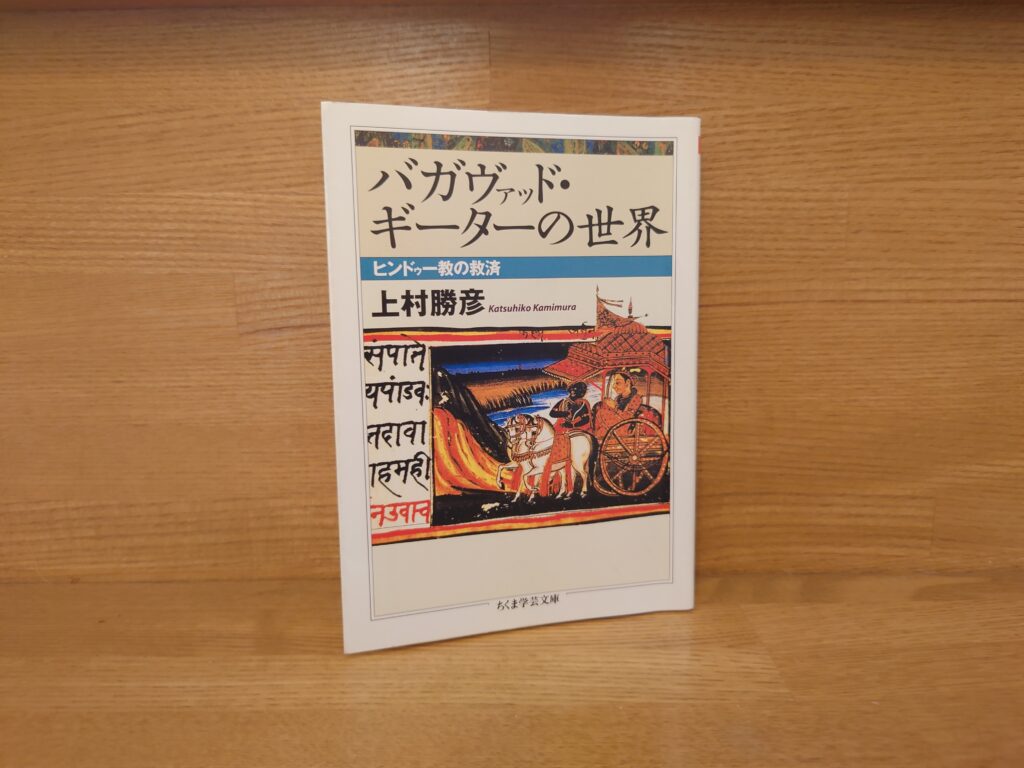
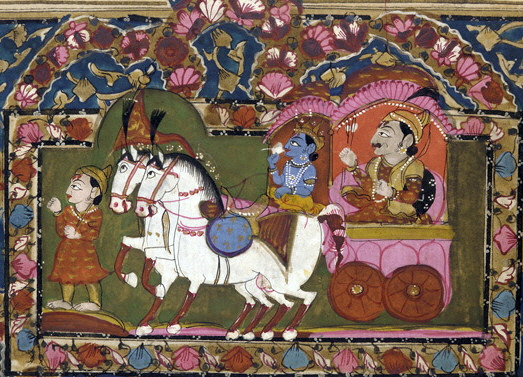
This work is the great Indian epicThe Mahabharata.India's premier book of thought, written inThe Bhagavad Gita.This will be a commentary on the
As noted in the product introduction above, the author points out the connection to Japanese culture and Mahayana Buddhism in this Bhagavad Gita.
It is no exaggeration to say that the Japanese are, so to speak, "hidden Hindus. One of the purposes of this book is to show that."
It's a shocking word, isn't it?
But in this book, these words feel all too real. The connection with Japanese culture and Mahayana Buddhism is explained very clearly.
This book is a commentary on the ancient Indian philosophy of the Bhagavad Gita, and as such, it may be a difficult book to get a hold of. However, I suggest that you switch your perspective and look at this book as a Buddhist book.
The book is designed to be read without any knowledge of ancient India or Indian thought. At the same time, the work is easy enough to understand that it can also serve as an introduction to Buddhism. This is a great book.
This is a highly recommended work that will give you a new perspective on Japanese Buddhism. Why not pick up a copy?
The Mahabharata, a Tale of Indian Mythology
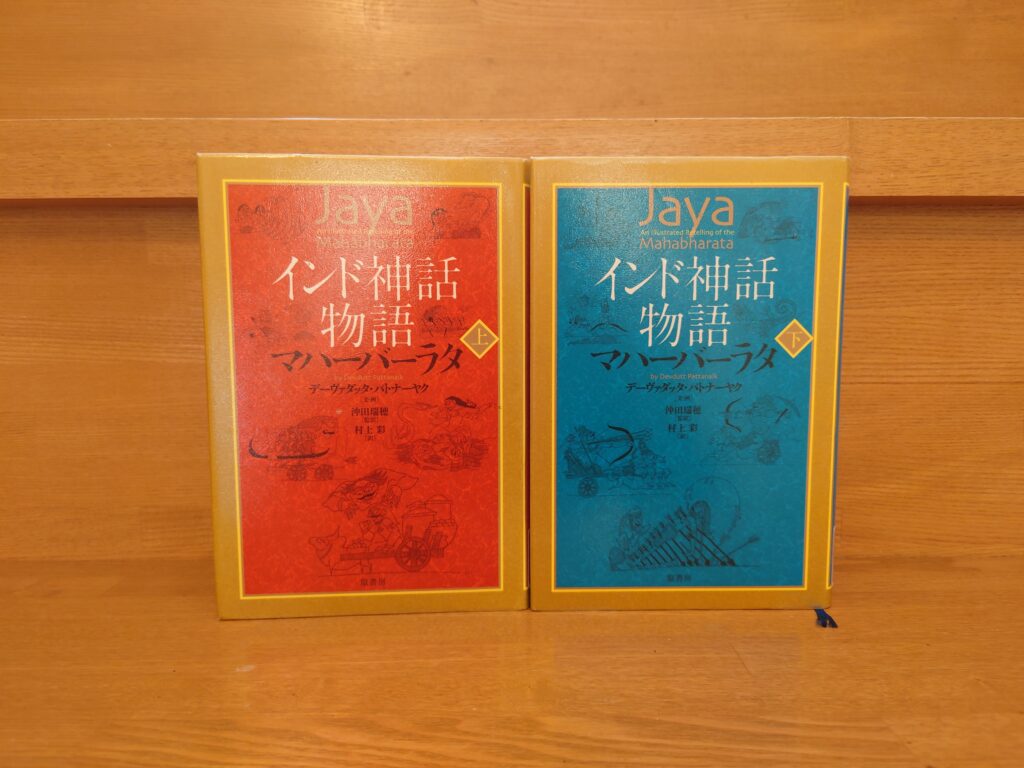
The Mahabharata is one of India's two major epics (the other being the Ramayana).
This great epic is also popular in modern India, and many movies have been made based on the heroes and deities mentioned here. The Indian movie "RRR," which recently became an explosive hit, is just one of them. One of the main characters, Bhim, comes from Bhima, the hero of the Mahabharata. More to the point, the other hero, Rama, also comes from Rama, the hero of the Ramayana. In other words, "RRR" is a gorgeous work of Indian spiritual expression, an amalgamation of two great Indian epics. I was also moved by this!
As a story in itself, the Mahabharata is very interesting. The story itself originates from a struggle for the succession to the throne, which leads to a variety of human dramas. The story is even more dramatic and highly readable when it involves curses and causal relationships from a previous life.
Furthermore, starting with the "Bhagavad Gita," this mythology asks us how we should live and what we should seek to live in the miserable hell of war and a life full of suffering. These dramatic mythological tales are filled with deep contemplation on how we should live. It is this deep contemplation and wisdom of "how we should live" that has taken root so far in India.
Greek mythologyThe Iliad.The same is true of the "The Tale of the Tiger," which is an outstandingly interesting tale to begin with! There is still a reason why many people are familiar with it even today. It was also a very interesting work to learn about the origin of Indian thought.
The Bhagavad Gita.
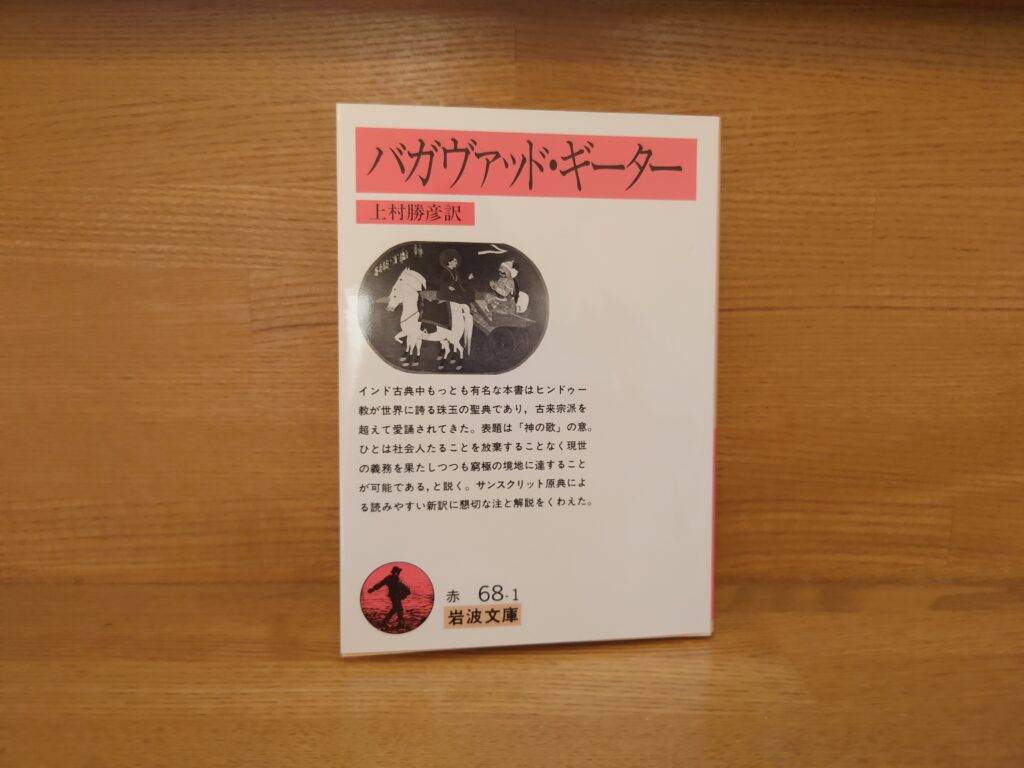
The Bhagavad Gita is a dialogue that can be described as a profound work of Indian thought, as expounded in the Mahabharata, the great epic poem of India.
It consists of a dialogue between Arjuna, one of the protagonists of the Mahabharata, and his consort Krishna (actually an incarnation of Lord Vishnu).
The dialogue will of course begin against the background of the storyline of the Mahabharata. Although it is possible to read the Bhagavad Gita on its own, it is essential to know the main plot of the Mahabharata in order to appreciate it more deeply.
The Bhagavad Gita is quite compact, about 140 pages in paperback. Katsuhiko Uemura's translation is very easy to read, and there are more than 50 pages of commentary at the end of the book, which is very helpful.
Above.The World of the Bhagavad Gita: Hindu Salvation.and by Mizuho OkitaAn Introduction to the Mahabharata: An Introduction to Indian Mythology."The Mahabharata itself is a great work of art, and when read in conjunction with the Mahabharata itself, it is even better understood.
This was also significant in my study of Buddhism. No, it was a gem of a scripture that opened my eyes not only to Buddhism, but also to religion and human beings themselves.
The Indian Mythological Tales of the Ramayana
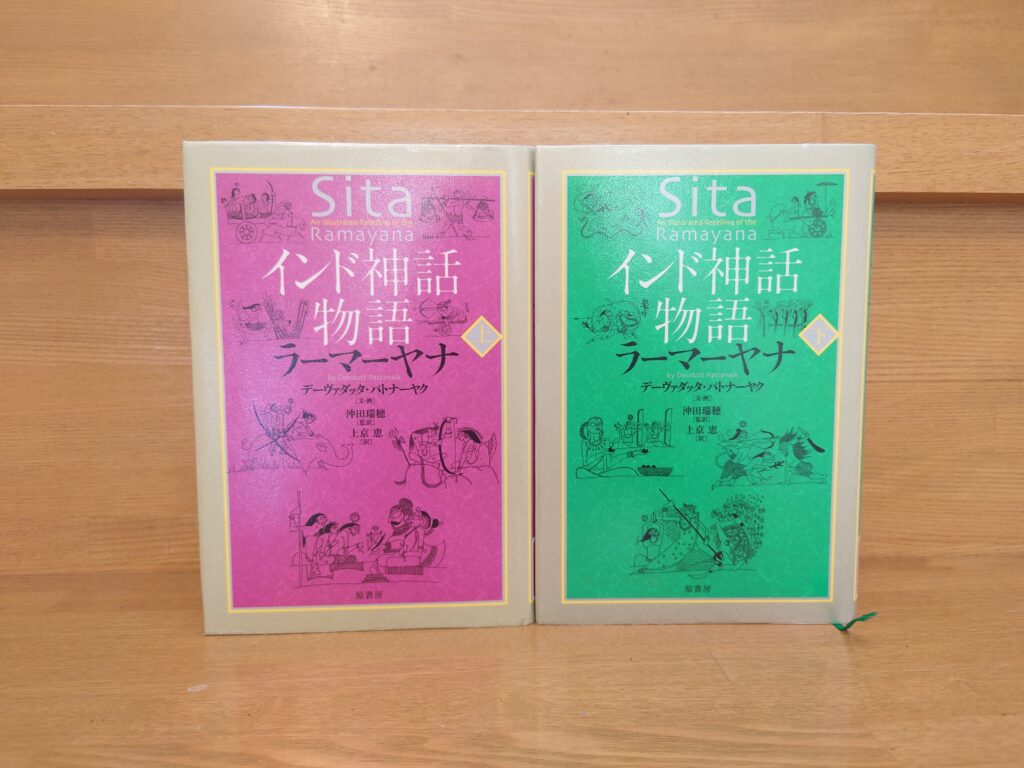
Along with the Mahabharata, the Ramayana is considered one of India's two greatest epics. The Ramayana tells the story of the adventures of Rama, the hero of the Ramayana, who goes to rescue his wife Sita, who has been taken prisoner by the Rusha King.
I have read the Mahabharata and the Ramayana, two great Indian epics in a row, and this was a wonderful experience. I was completely blown away by the depth and interest of India. I highly recommend this work.
Akira HasegawaAn Introduction to Indian Mythology.
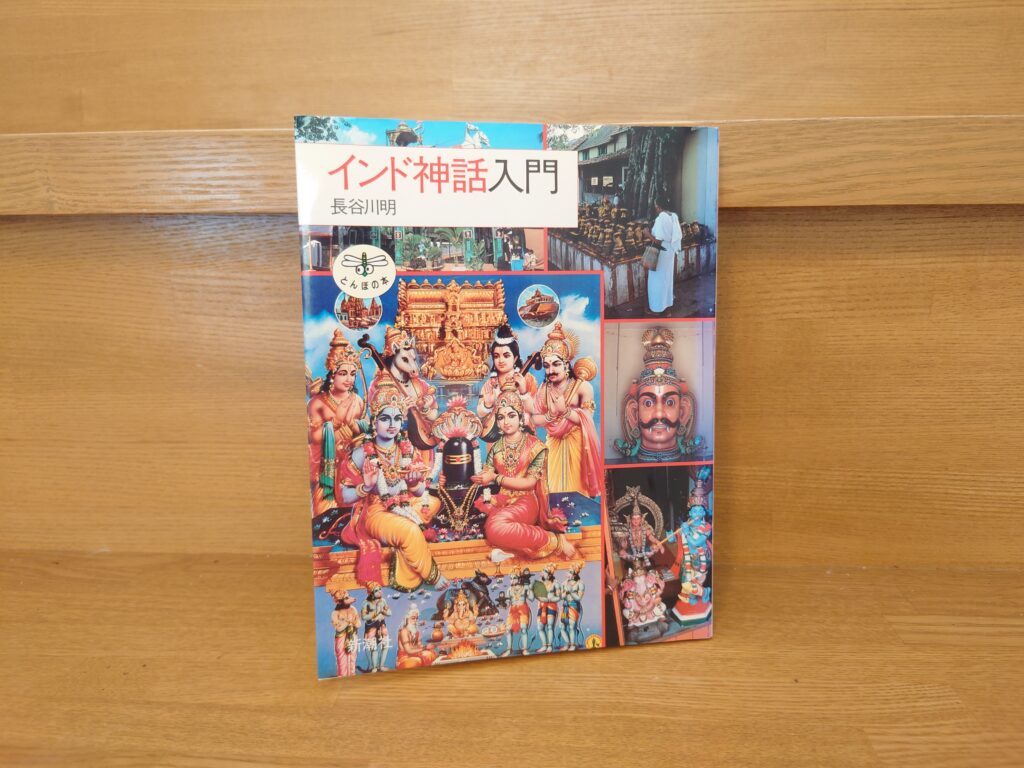
In this book, you can learn about Indian deities with many iconographies. It is very easy and gratifying to learn the characteristics of the gods and how to recognize them by actually seeing them.
As foreigners, it is difficult for us to distinguish between Indian deities at a glance, but there are certain points that can be used to identify them. Each deity has its own unique appearance and possessions. Once you know how to recognize them, you will feel more familiar with Indian deities.
I have studied India mainly through the text of books, but it was refreshing and fun to actually take a closer look at the deities in this way. At first, I was so eerie that I could not even open the book, but now this book is my favorite book. I pick up this book every now and then to review the characteristics of each deity and say, "Oh, this is Shiva's characteristic. This is a useful book.
Nobuyuki WataseThe Code of Manu, The Prototype of the Hindu World."
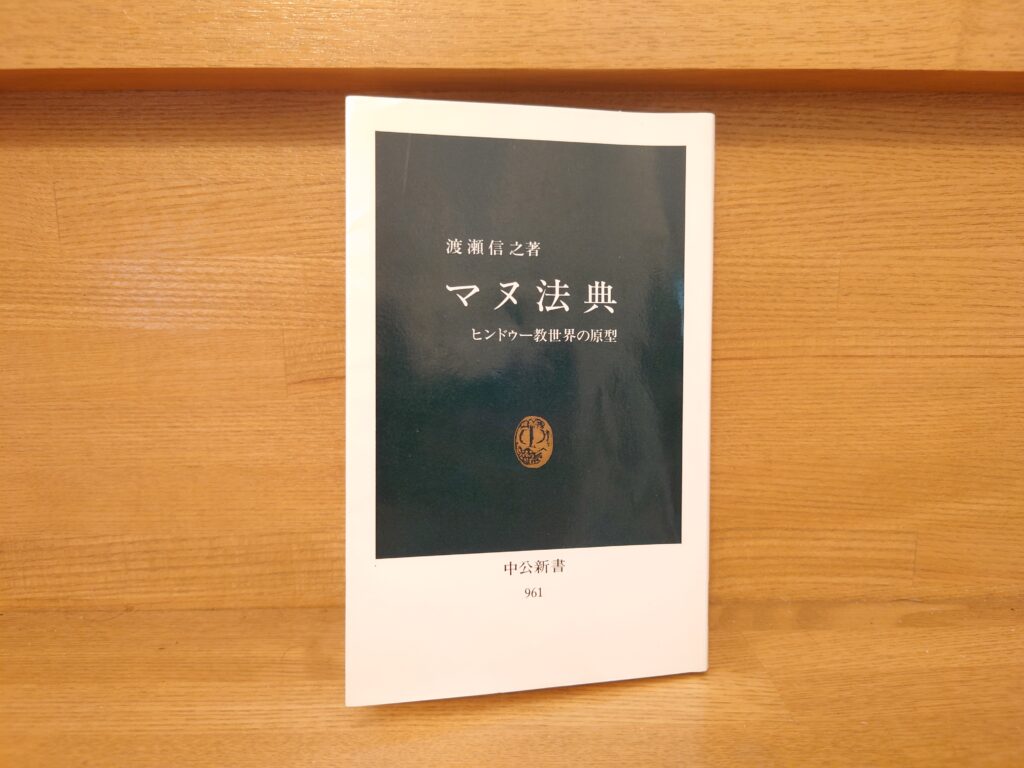
This book was the cornerstone of the worldview and code of life of the Indian Hindu world.Manu Code."This is a reference book for
This work is an excellent, easy to understand overview of the "Code of Manu".
Religion in India is an integral part of life itself. It is not merely a spiritual belief, but exists as a way of life itself. Buddhism was born out of this inter-religious and worldview of India.
This "Code of Manu," as it is also preached in this work, has also been greatly influenced by Buddhism, Jainism, and various ordained practitioners. No, to be more precise, ideas and institutions have been created by influencing each other.
When we Japanese try to study Buddhism in India, we tend to see the Indian world only from the Buddhist side. In India, however, Buddhism was more of an outsider's existence. The mainstream is still Hinduism.
Moreover, Buddhism adopted a policy of not intervening too much in the daily lives of its lay believers. In other words, the daily life and rites of passage of Buddhists remained within the framework of the Hindu world.
This book is very valuable to know the norms of life and worldview of the Hindu world, which has also coexisted with such Indian Buddhists. I think it is a very significant work for thinking about Indian Buddhism.
Manu Code."

The Code of Manu is an Indian sacred text believed to have been compiled between the 2nd century BC and the 2nd century AD. This scripture continues to have a profound influence on Indian society today.
The Code of Manu is more than just a law book. The first thing that surprises you when you start reading "The Code of Manu" is that the scripture suddenly begins with the story of creation. It begins with a magnificent cosmology and worldview centering on the Creator, Brahman, and from there, it tells us how we should live and what should be the norms and rules for our lives.
Also, as was explained in the above "Code of Manu, the prototype of the Hindu world," the point is not simply to enumerate the norms and systems of life, but rather that there is a religious authorization by the creator, Brahman, in it.
The Code of Manu is a scripture with an aspect of opposition to Buddhism, Jainism, and countless ordained practitioners. While Buddhism was pessimistic and idealized a form of destruction of desires, the Hindu scriptures were world-affirming and did not deny the fulfillment of desires. This may have been one of the reasons why Buddhism died out and Hinduism flourished in India.
Kautilya.A Pragmatism."
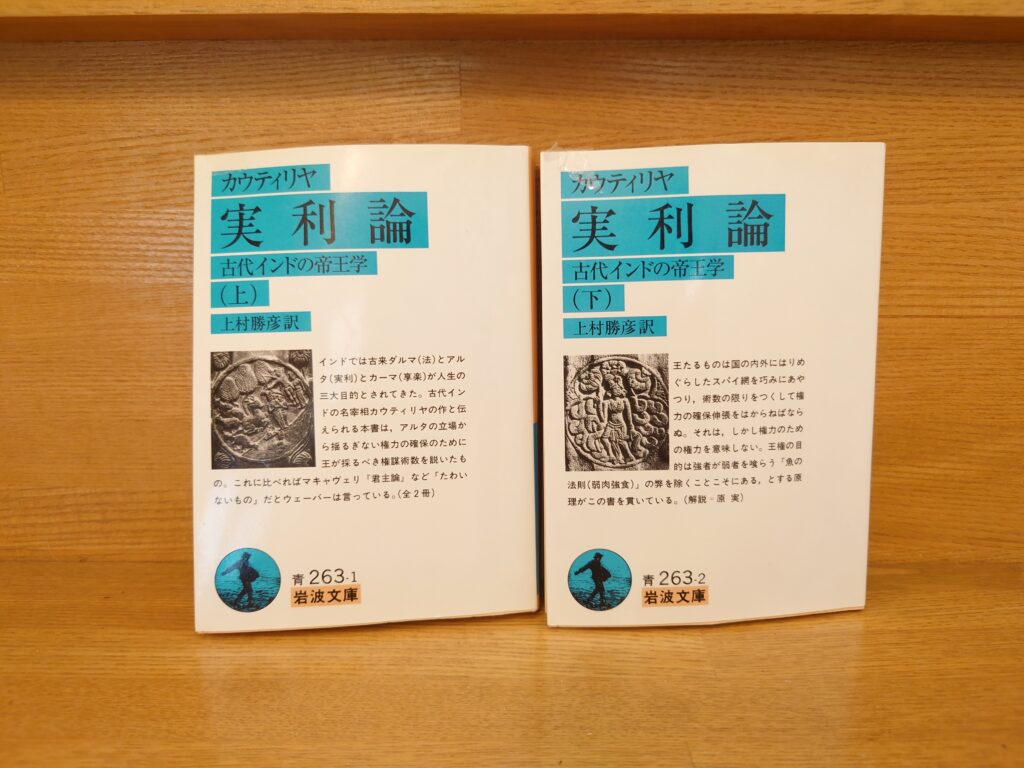
Kautilya, the author of this work, is a man with whom we Buddhists have a great deal to do. Kautilya was a famous vizier of Chandragupta, the founder of the Maurya dynasty founded in 317 B.C. The most famous figure of this dynasty was King Asoka, who appeared a little later.
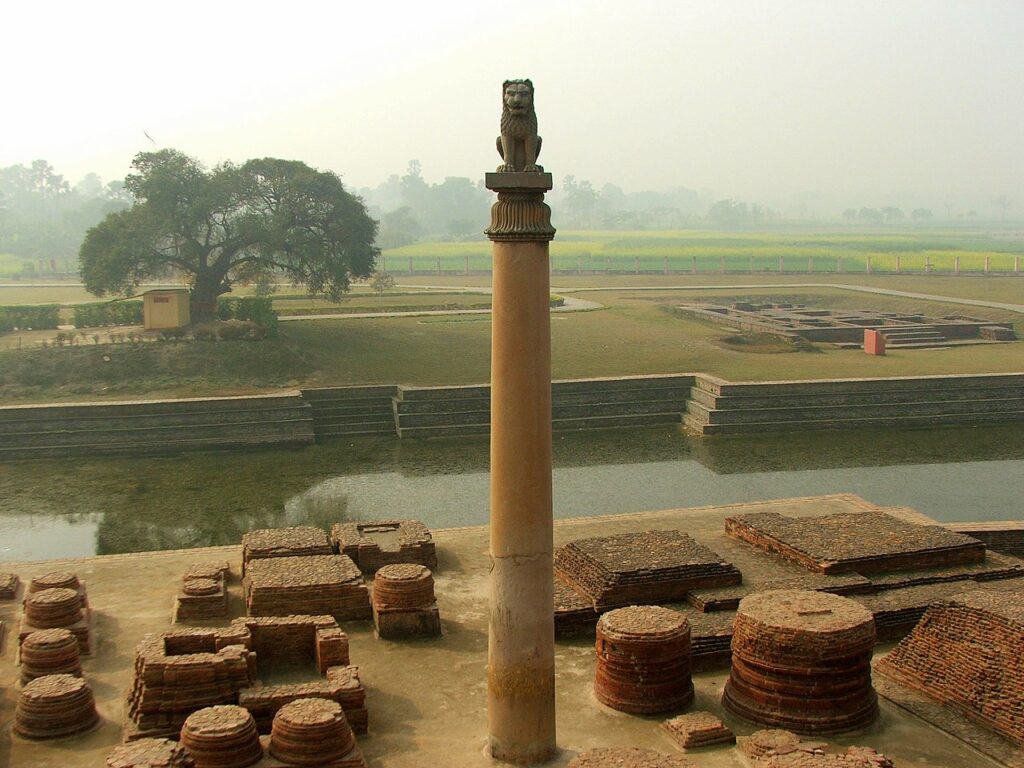
King Ashoka is famous for spreading Buddhism throughout India, and his dynasty was able to have a power that spread throughout India because of the political power of this Kautilya.
So, for us Buddhists, too, there is actually a connection to Kautilya.
Now, Machiavelli'sThe Monarchist.In "The Theory of Pragmatism," the author explains the scheming and scheming of the Japanese people, but this "Theory of Pragmatism" is also quite brutal.
The commentary also states, "The author of this book describes every possible tactic a monarch should employ in order to protect his own security, increase his national power, and acquire the territory of others. The examples of espionage activities that are developed throughout the book are among the most noteworthy. In the Indian classics, espionage is given great importance, and even in later works of literature, kings who fail to make proper use of spies are condemned. The use of spies is especially carefully explained, as stated in the following passage.
Reading this book, I do not envy you at all for being born in royalty. No matter how extravagant I may be, I would respectfully give back that right. Maybe Buddha felt that way too.
Even during the reign of the Buddha, several hundred years before "The Pragmatics," the whole of India was in a period of warfare, and the rule was based on the rule of the weak and the strong. Furthermore, Buddha was a prince of the Sakyamuni tribe, and he had to rule the country by using the power and tactics that were originally taught in the "Theory of Pragmatics. As a result, Buddha abandoned this path and became an ordained monk, and the Sakyamuni was subsequently destroyed by the great Kosala kingdom. The Buddha witnessed the annihilation of the country of his birth.
Even the Kosala State, which destroyed the Sakyamuni, was destroyed by the Magadha State soon thereafter. Incidentally, the king of Magadha at that time was a famous man named Ajase. I am sure you have heard of him.
Buddha preached Buddhism based on his firsthand experience of the realities of this kind of weak and powerful world. This reminds us of how far Buddha's peaceful teachings were from the common sense of the time.
The peace preached by the Buddha is merely an ideal. It is powerless in the face of reality. Governing a country is not a pretty business."
I have had such painful thoughts many times, but I still think it is a great thing that Buddha taught his teachings with conviction and lived to the end.
This book is also a very useful work in understanding the difficult Indian situation at that time.
The Kama Sutra."

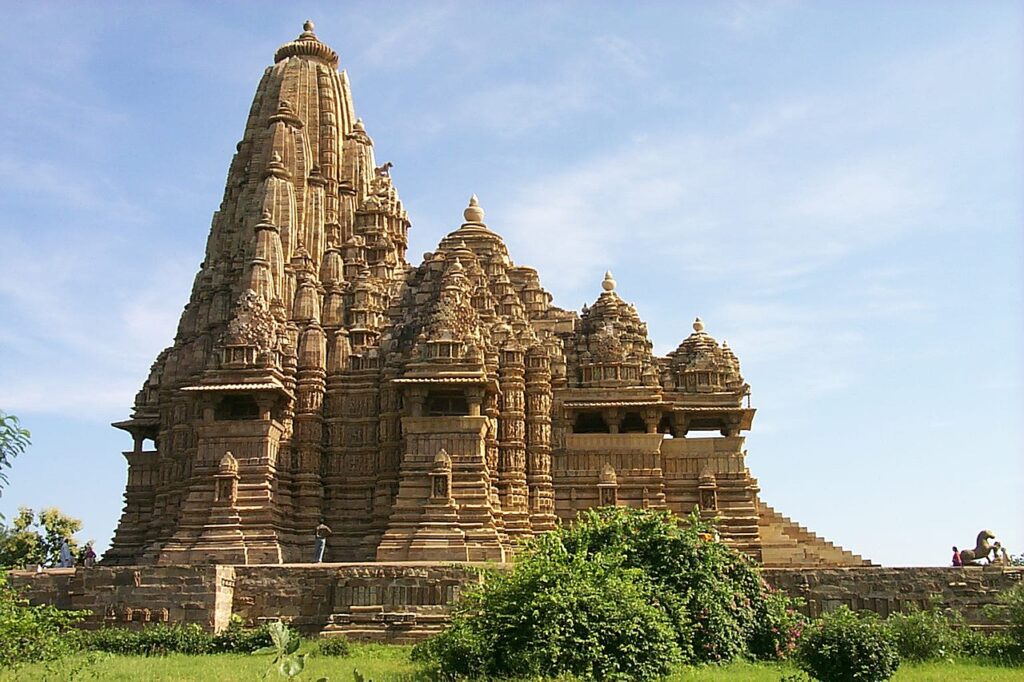
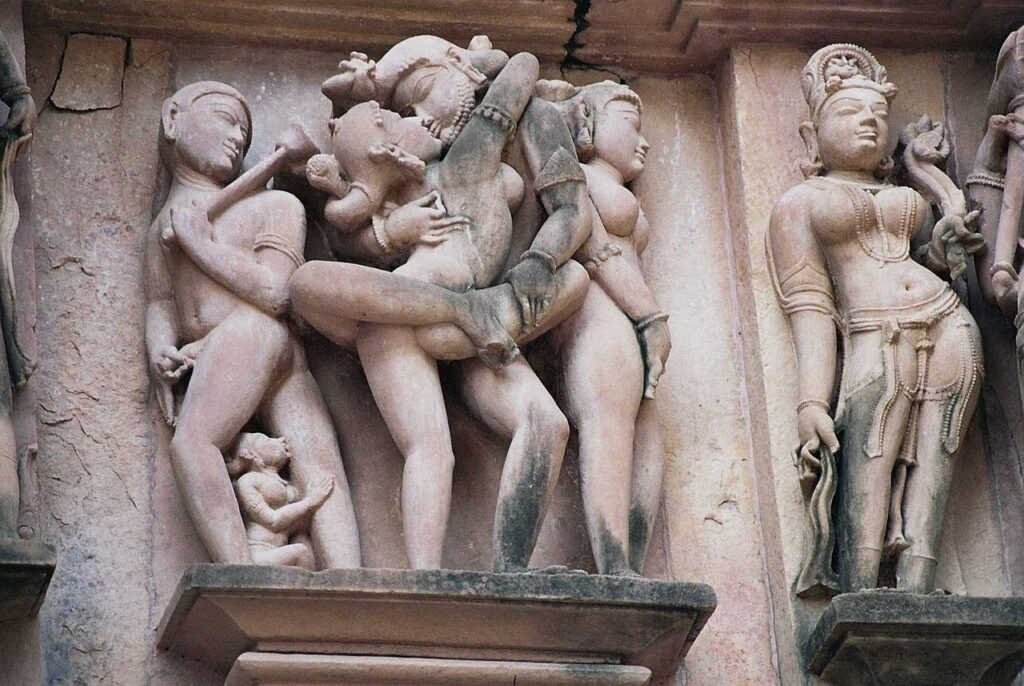
It was Khajuraho, India, that inspired me to read the Kama Sutra. It is a Hindu temple, and yet it is filled with sexually explicit carvings. But don't just dismiss them as "sexually suggestive"; the issue of sexuality in religion has a great deal of importance. Moreover, this is not just a story within Hinduism, but Buddhism also absorbed Hindu ideas, leading to tantrism and esoteric Buddhism, and these ideas and practices related to sex emerged.
The Kama Sutra is not just a pornographic work. Although it is often misunderstood as being full of explicit sexual expressions, it is only one part of the life between a man and a woman. The Kama Sutra includes the entire encounter between a man and a woman, and the life they lead together. When I read this code, I was surprised to find that it is full of rules for life between men and women.
previously introduced.Manu Code."The Hindu world was also a very strictly regimented world, with norms for all aspects of life. In this light, the Hindu world had a fairly strict code of conduct and beliefs for all aspects of daily life. Of course, not everything was strictly adhered to, just as there is a true and false side to life. However, I believe that Hinduism was imbued into every corner of their lives.
Kenji WatanabeJainism: Non-Possession, Non-Violence, Non-Killing: Its Doctrines and Real Life.
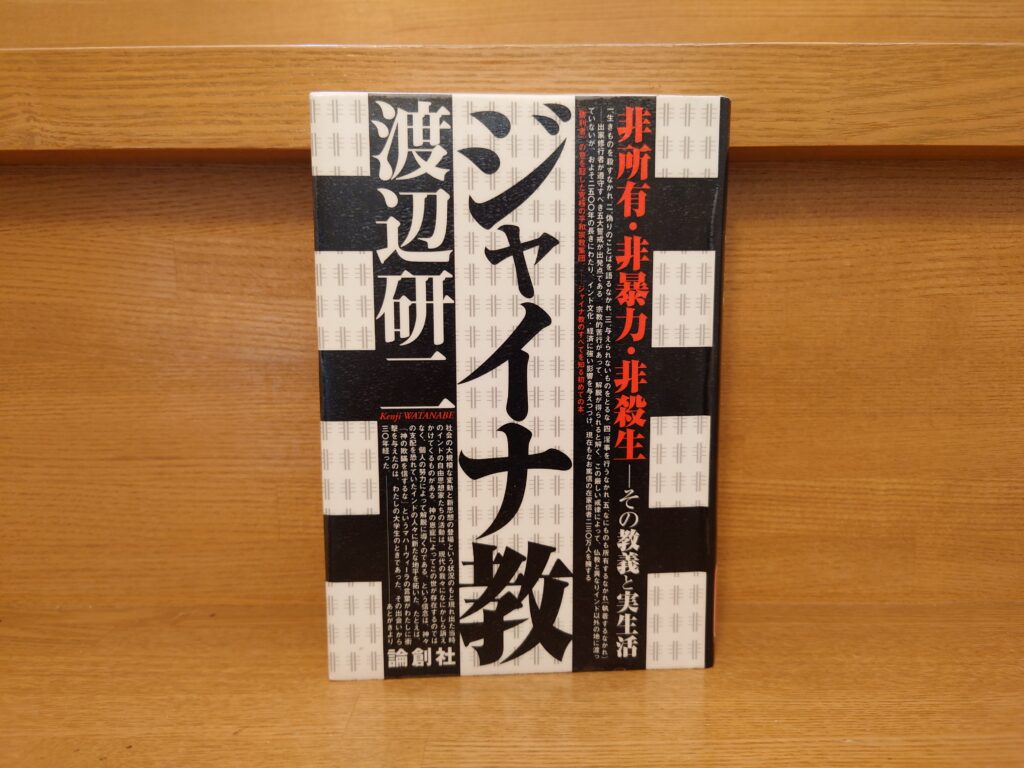
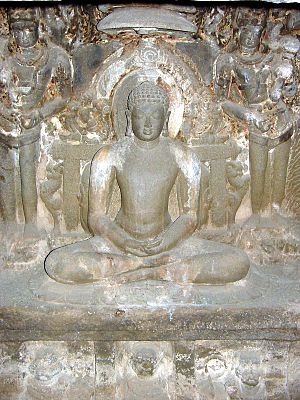
Jainism is a religion that has so much in common with Buddhism that it is considered a sister religion.
This book provides an easy-to-understand introduction to the basic tenets of Jainism and the background of its formation.
I highly recommend this book to learn what Jainism is all about along with the historical background.
It was a very readable introduction to Jainism and a welcome reference work on Buddhism.
Recommended books for those who want to know more about Indian Buddhism
This article recommends books to learn more about Indian Buddhism.
I have introduced books on Indian religions, but I have decided to omit books on Buddhism as well, since the amount of books on Buddhism would be too large. We hope you will find it useful as well.
Recommended reference books to learn about modern India
Aya IkegameIndia's Cruelest Tales: The World's Toughest People
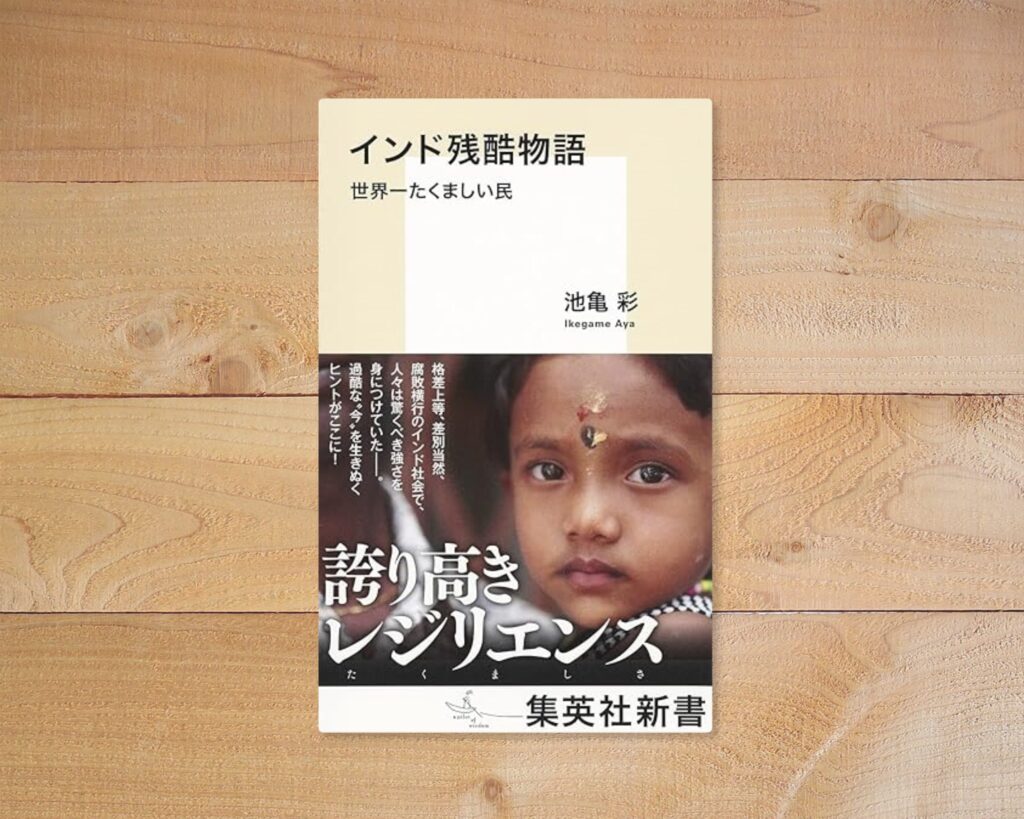
I was strongly shocked by this book. As a Buddhist monk, I could not help but be shocked by the issues it discussed. I will discuss the details again later in this article, but for me, this book raised a major issue in my thinking about the existence of India.
This book is a work that discusses the caste system in contemporary India. As mentioned in the book introduction above, this book is a valuable record based on the author's field research. There is a real life there that cannot be known only by reading literature on a desk.
Kinya FujimotoThe Danger of India's Favorable Development.
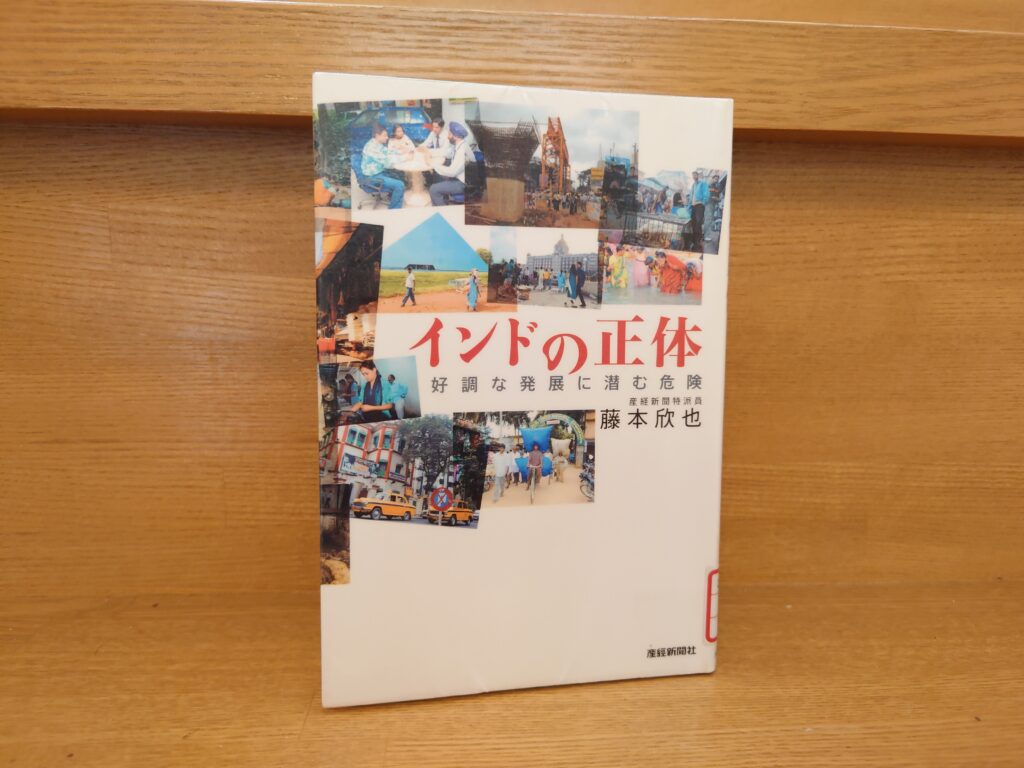
This book gives us a glimpse into Indian society as it was in 2006. 2023 is now the year of India, a giant that continues to grow at a rate surpassing that of China. This book is a very interesting work that gives us an insight into what India was like in 2006.
This book looks at India from various perspectives: "society, culture, and business. It is very easy to read and easy to visualize the local situation because of the abundance of photographs.
This work is highly recommended for those who want to learn more about contemporary India.
Ryohei KasaiModi's Changing India."
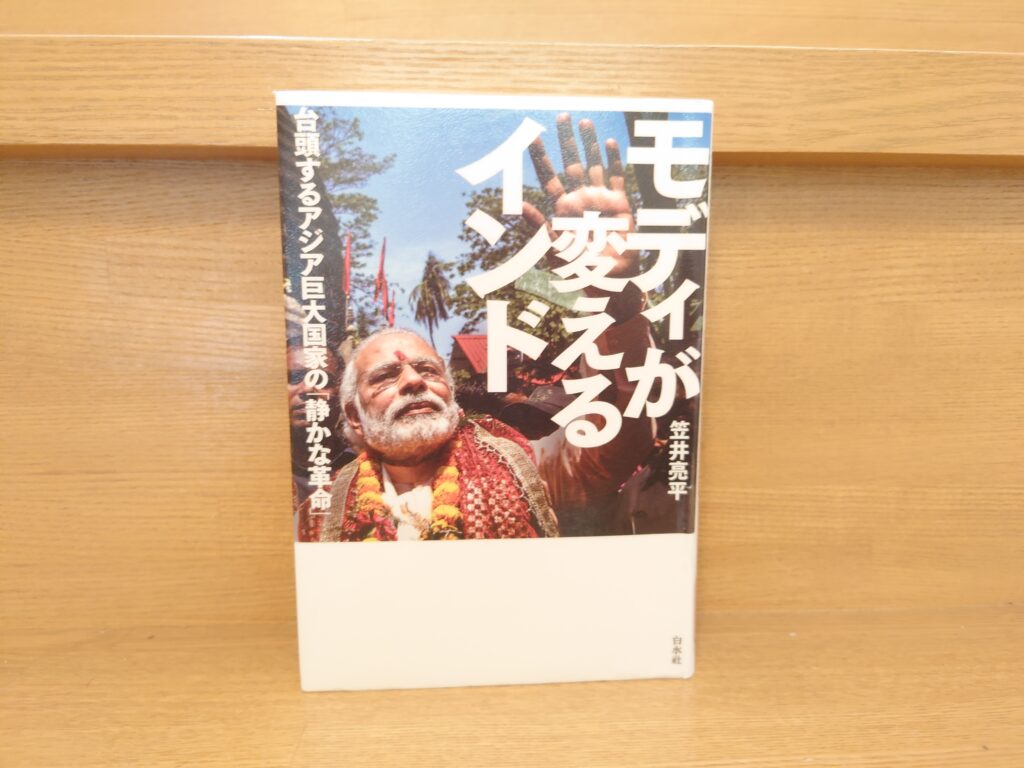
India has shown rapid growth in recent years, so much so that it may finally surpass China, BBCNEWSJAPAN's"India's population to overtake China as world's largest by mid-year at 1,428.6 million = UN."article stated that the country will surpass China in terms of population by the end of this year.
This book is an excellent introduction to the political economy and diplomacy of this growing modern India.
The protagonist of the current book, "Modi's Changing India: The 'Quiet Revolution' of a Rising Asian Giant Nation," is, as the book title says, Narendra Modi, who became Prime Minister of India in 2014.
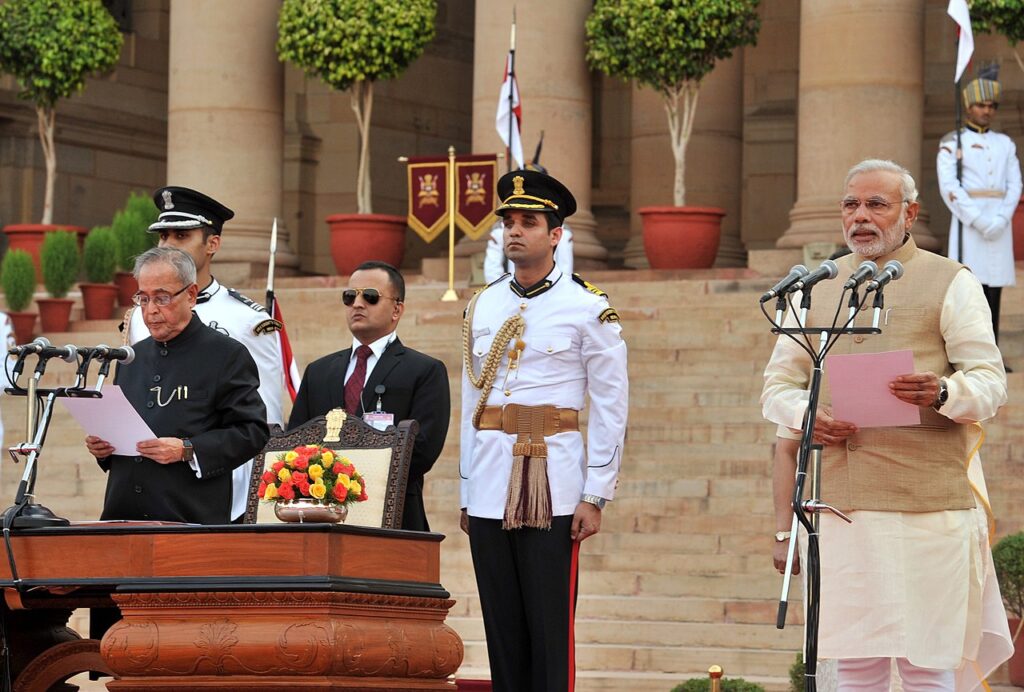
The book takes a look at the complex Indian society around the figure of Prime Minister Modi.
Prime Minister Modi's brief biography, his personality, and how he became one of India's most influential figures will be explained in an easy-to-understand manner.
Qing FenHow to Deal with Indians: Common Sense and Business Secrets of India."
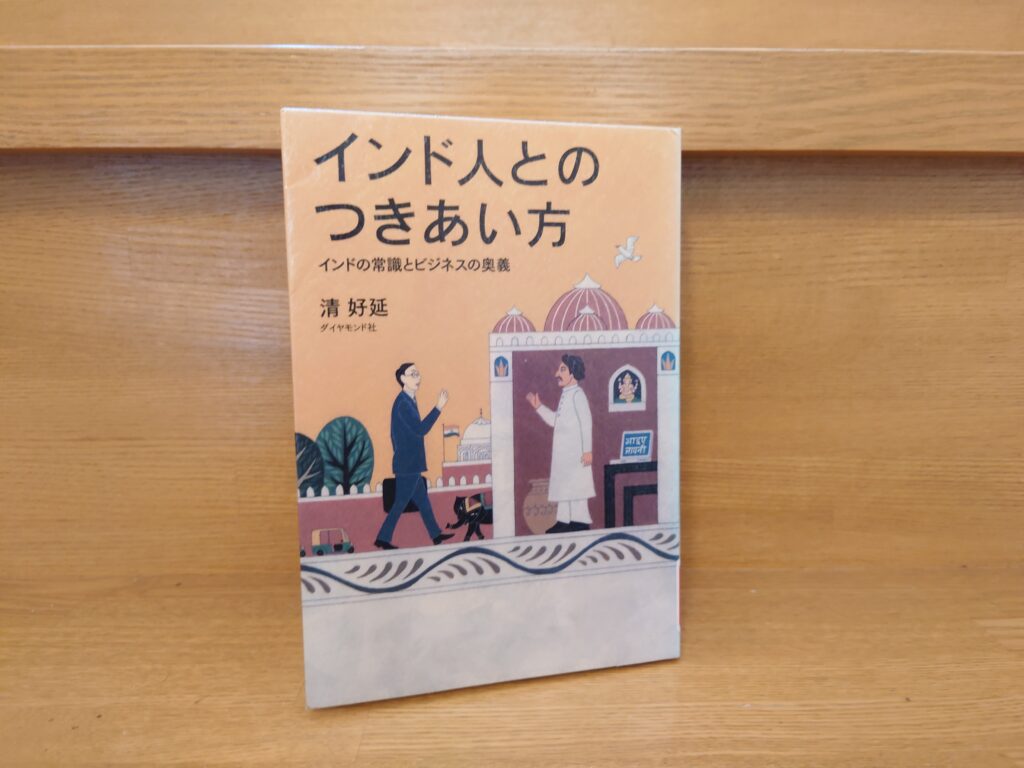
This book is a work that gives us an insight into what kind of people the Indians are, which can only be described as a "mystery" to us.
When we think of Indians, there are many stereotypes for us. Turban, curry, singing, dancing, intelligence, Indian chaos, etc., all of these may have some strong image.
The main thrust of this book is to learn what kind of people Indians with such a strong image are from various perspectives, intertwined with Indian history, lifestyle, culture, and business.
Although this book is only written for those who do business in India, it is also highly recommended for those who are interested in India itself. India is a country of mystery. Here is a view of the world and people that is completely different from that of Japan. It is a very interesting work in terms of learning about different cultures.
James Crabtree.Billionaire India."
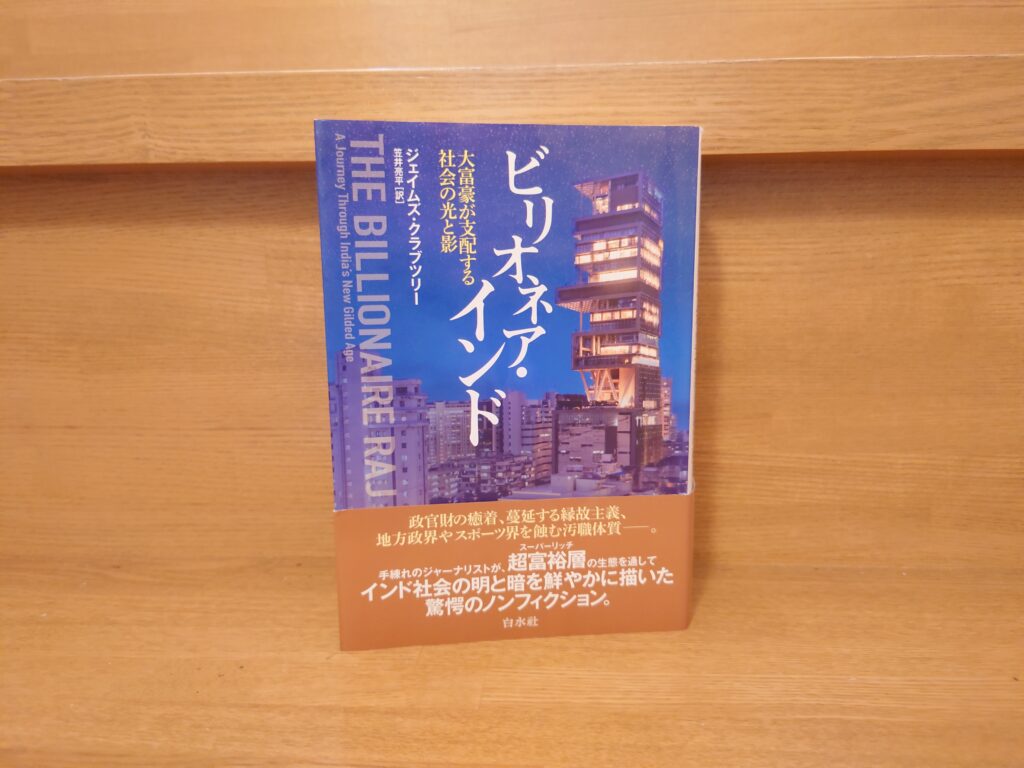
India, a fast-growing economic superpower, will overtake China's population by 2023. Where is India headed for the future under the leadership of Prime Minister Modi? This book is a good way to learn about modern India, which has now become a huge influence on the world.
As the title of the book, "Billionaire India: Lights and Shadows of a Society Ruled by Millionaires," suggests, this book looks at India with the main theme of the super-rich in India.
The first thing that surprises me when I read this book is how wealthy the Indian millionaires are. The super-rich are being born one after another in India, who are ranked at the top of the world's richest people.

This is Antilia, the home of millionaire Mukesh Ambani, who appears at the beginning of this book. This building, which also appears on the cover of this book, is said to be the most exclusive private residence in the world. Perhaps you may be thinking, "Aren't there many buildings of this size in the world?" You might think, "Aren't there many buildings like this in the world? But no. This building is not just a part of his house, but the building itself is his private residence. This is the reason why Ambani is so incredibly wealthy.
Nowadays, India is seeing more and more of these super-rich people emerge. They have overwhelming wealth, but on the other hand, the problem of overwhelming inequality is shaking India.
India has always been known for its great disparity, but here the disparity has become even more extreme. This has become a source of concern for modern India.
This book is a good way to see how such super-rich people were born. And as mentioned in the introduction of the book, the main reason was the reality that we would like to turn away from: collusion with the political and business world, nepotism, corruption, bribery, and other forms of injustice.
The corruption in India described in this book is horrendous. We are told in the media and in many other places that "India will lead the world in the future," but I doubt that it will be that simple. We have no idea how India's development will turn out. It is a matter of darkness. It is hard to imagine what will happen to this chaotic country.
Shinya SuzukiCaste and Tentacledons in Contemporary India."
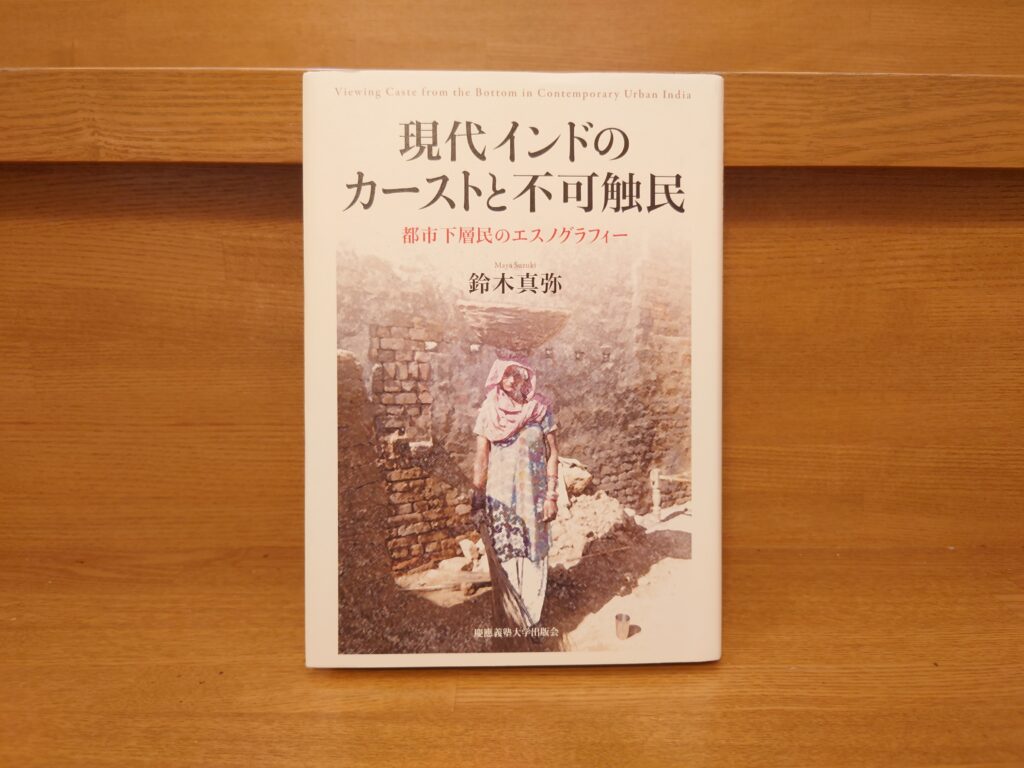
In this book, we will look at the dire situation of the cleaning caste in Delhi.
The book will also consider the content and issues of reforms by Gandhi. What was Gandhi's ideal Indian society like? It shows how Gandhi thought about the caste system and the untouchables. Gandhi has a strong image of being a saint who exercised great leadership in India's independence, but I think it is very important to know how Gandhi thought about caste.
This book is a valuable source of information about India, mainly based on data and fieldwork. It was a very gratifying work to learn about caste discrimination. I highly recommend this work together with "1.3 Billion Toilets: India, an Economic Powerhouse Seen from Below" by Daisuke Sato, which is introduced in the next section.
Daisuke Sato1.3 Billion Toilets.

This book was also shocking. by Shinya Suzuki, introduced in the article above.Caste and Tentacledons in Contemporary India."In "The Toilet of 1.3 Billion People: India, an Economic Powerhouse from Below," we learn more specifically about the tragic reality of Delhi's cleaning caste.
While "Caste and Tolerance in Contemporary India" is an excellent reference book to get the big picture, mainly consisting of data, fieldwork, and historical background explanations, this work is full of strong examples one after the other. The two works are a perfect combination for a synergistic effect.
This book is an extremely dense and informative work, even though it is a new book. It is one of the best books to learn about contemporary India. It is a very stimulating book that tells the story of modern India from the very unusual angle of "toilets". The book is easy to read, and you can easily get through it. You will be drawn into this book in no time at all, as it is full of surprising details.
Conclusion
These are some of the books we recommend for India.
The more you know about India, the more interesting it is. And the more I learned about India, the more interesting it was.
We hope you will find it useful for your reading.
The above is a list of recommended reference books to learn about Indian history, religion, and culture - the more you know, the more interesting you will find the Indian swamp.
Related Articles











